

THIS OFFERING IS NOW OVERSUBSCRIBED
Kleiner Device Labs has exceeded its funding goal. New investments are no longer being accepted. However, you may join the waiting list and will be notified if the company decides to raise more capital.
 $1,069,278 committed684 investors
$1,069,278 committed684 investorsOFFERING TYPE: Regulation CF
PRICE PER SHARE: $3.50
VALUATION: $28.5 million
MINIMUM: $437.50

Want to invest in this company?
Click the button below to get started…


But now, this crippling pain was threatening his entire way of life.
His doctors said that surgery would be very risky for him. Because of his diabetes, doing traditional open theatre back surgery could lead to huge consequences:
Then one day, he met Dr. Kleiner and learned about his revolutionary strategy for performing what’s called “minimally invasive spinal surgery.”
For years, Jon K. suffered from chronic back and leg pain. As an artist and avid outdoorsman, Jon chalked his aches and pains up to “getting older.”
But now, this crippling pain was threatening his entire way of life.
His doctors said that surgery would be very risky for him. Because of his diabetes, doing traditional open theatre back surgery could lead to huge consequences:
Then one day, he met Dr. Kleiner and learned about his revolutionary strategy for performing what’s called “minimally invasive spinal surgery.”

Instead of an 8-hour procedure that would require blood transfusions, damage the normal structures of his spine, lead to a high risk of infection due to the procedural invasiveness, as well as a prolonged hospitalization and a long recovery…
Feeling like this was his last option to finally free himself of the sleep-depriving and activity-limiting pain… Jon put his faith in this breakthrough procedure that promised to do what traditional spinal surgical procedures could not.
Because the surgery was performed using minimally invasive techniques…
There was no need to cut muscle, divide the muscle-to-bone connective tissues, or remove normal parts of his anatomy…
However, for most patients considering minimally invasive spinal surgery, the failure rate is uncomfortably high:
To Dr. Kleiner, these statistics simply weren’t acceptable.
That’s why he began developing – and patenting – a new way of performing spinal surgeries. He calls it the Kleiner Device Labs KG™ System…
And the results Dr. Kleiner has achieved using this revolutionary system are impressive: a 92% chance of achieving a successful spinal fusion compared to the 75% rate provided by other modern techniques.

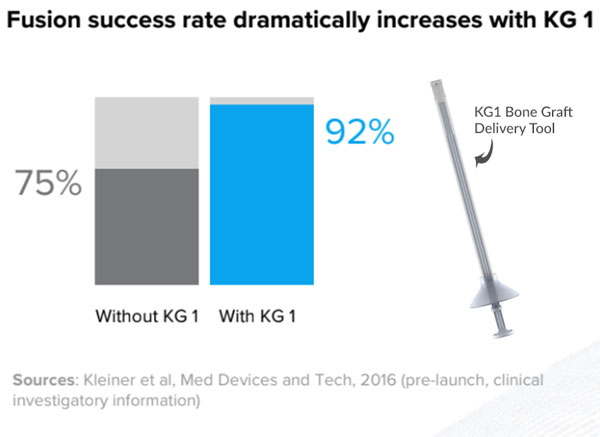
For Jon, a 92% successful fusion rate, a negligible risk for infection and being out of the hospital at home in 1.5 days made it worth the risk of surgery.
Within three months of the surgery, Jon was riding his road bike again, and with minimal pain.
Within six months, he was back on the slopes, skiing for the first time in years.
And today, he can walk, stand, and sit without feeling a crippling pain shooting down his legs and no longer has pain every time he moves.
To call it a miracle might be a bit sensational…
But for Jon, it probably felt like one.
What’s the Secret Behind this MedTech Breakthrough?
It all has to do with an elegant solution to a decades old problem.
In case you’re not an expert on spinal surgery – or you don’t know exactly why spinal fusion is critical to success – here’s a quick primer.
According to the Mayo Clinic…
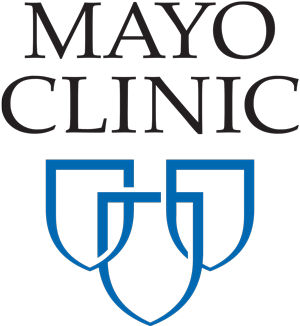
The logic behind a spinal fusion is simple: stop the motion, stop the pain.
To do this, surgeons place bone – or a bonelike material – in the space between two spinal vertebrae. Metal plates, screws and rods may also be used to hold the vertebrae together, so they can heal into one solid unit.
In practice, this means filling the space between the vertebrae with something called “bone graft,” which is put in between the vertebrates to “prime” the body to grow new bone and successfully fuse the spine.
As the European Journal of Orthopedic Surgery & Traumatology noted in a study:
“The fusion rates significantly increased as the amount of bone graft increased”

Which brings us to the critical question Dr. Kleiner had to answer…
If the best way to increase the odds of success is to deliver more bone graft, what’s the best way to do that?
It all has to do with this patented rectangular shaped device.
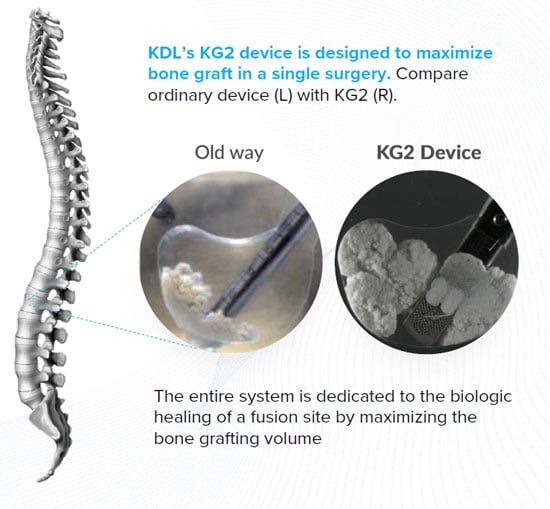
It’s called the KG™2, Solid State Fusion Platform; a simple tool that can help surgeons deliver up to three times the amount of bone grafting material than standard spinal surgical methods.
Even more impressive, this breakthrough technology is secured by a fortress of 23 US patents (with five US patents currently pending).
However, the Kleiner Device Labs KG™ System – along with specialized devices like the KG™2 – can do much more than just maximize bone graft delivery. It also:


What Makes the Kleiner Device Labs KG™ System Special?
And today, everyday investors have a chance to be a part of what could be the most significant advancement in spinal surgery in 30 years…
A breakthrough technology that could potentially become the new standard in spinal surgery, and completely change the options available to the 266 million people each year who develop degenerative spine disease.
And perhaps the most important option it could give these millions of people who suffer from chronic back pain?


According to a recent report by Bain & Company…
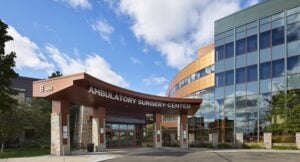
Our analysis shows single-specialty centers focused on orthopedics, cardiology and spinal surgery will see the fastest growth in volume of procedures through the mid-2020s.
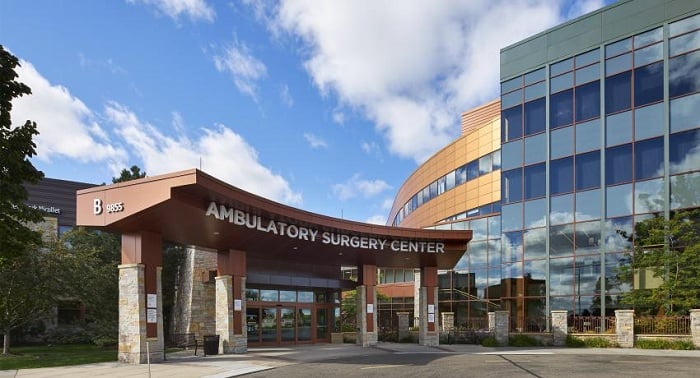
Ambulatory surgery centers (ASCs) are transforming healthcare delivery as well as the market for medical devices and equipment. By focusing on routine, lower-risk procedures in a more convenient setting, ASCs can offer surgical procedures at rates 35% to 50% lower than hospitals. That’s saving the US healthcare system an estimated $40 billion a year and fueling ASC growth.
Our analysis shows single-specialty centers focused on orthopedics, cardiology and spinal surgery will see the fastest growth in volume of procedures through the mid-2020s.
Minimally invasive surgery can potentially reduce patients’ risk of infection, as well as shorten post-op recovery time.
Even with a 25% to 35% failure rate, minimally invasive spinal surgeries are already a key profit driver for the $75 billion ASC industry.
Although spine procedures often represent 20% to 25% of orthopedic procedures at ASCs, they contribute over 50% to the profit.
That’s even with them being almost 25% cheaper than doing the same procedure at a hospital outpatient department; According to Medicare’s procedure cost estimate, a lumbar fusion would cost $13,560 at a hospital outpatient department, and only $10,267 at an ASC.
This means that if spinal surgeries could be made truly safe, everyone would benefit – surgeons, patients, hospitals (and ASCs), and insurers.
Because the failure rate of minimally invasive spinal surgery is so high, doctors have looked at the use of chemical adjuvants and hormones such as rhBMP-2 to supplement the procedure.
Not only is this expensive, it has its own set of serious side effects: forming too much bone, causing nerve inflammation, impotence and even cancer.
This high failure rate is one of the reasons why minimally invasive surgery is not used as often in the more than 352,000 spinal fusions are performed each year.
This means more than a thousand people a day choose to play “Russian Roulette” with their back pain, and by extension, quality of life.
That could all change thanks to the Kleiner Device Labs (KDL) KG System.
Kleiner Device Labs’ first invention – the KG1 – has already seen spinal fusion success rates increase from 75% to 92%. The KG1 has achieved Class II FDA clearance and is commercially available and sold in the US and OUS.
Their newest product – the KG2 – could take the success rate to the next level… making the surgeries faster, cheaper, easier, and even safer.
The KG2 is planned to be submitted to the FDA in Q2, 2021 for 510k clearance.*
And with it, comes the potential to put an end to this 70-year long “back pain epidemic” that has caused millions of people to suffer from the leading cause of disability in the world…
Help drive the fast-moving ambulatory surgical center space that is projected to explode to over $120 billion by 2026…
And potentially save Americans more than $434 billion per year in costs associated with back pain.
*Disclaimer: The KG2 product is in final development and not currently pending 510(k) clearance with the US FDA. The KG2 product is neither an investigational device nor the subject of an IRB approved clinical evaluation. The information provided on the KG2 product is intended for potential investors in Kleiner Device Labs and for a limited number of key clinician opinion leaders who can provide clinical input regarding the KG2 product applications.

7 Big Reasons To Consider Investing In Kleiner Device Labs
The company’s first KG1 product has already been shown to increase the rate of successful spinal fusion from a “C-grade” 75% to a “solid-A” 92%. Its upcoming KG2 has the potential to take this a step further by making the entire surgery quicker, easier, and even safer.
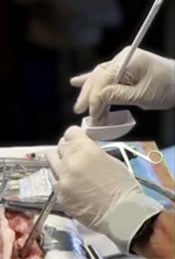
The KG2 has already been developed and is planned to be submitted to the FDA in Q2, 2021 for 510k clearance. While clearance isn’t guaranteed, the management team is optimistic the product will receive clearance. All that’s left is raising capital to aggressively show the medical industry why the KG2 deserves to be a vital part of a new standard in spinal surgery.
Healthcare costs are spiraling out of control. The industry must figure out ways to bring down their costs – without sacrificing quality of care. Kleiner Device Labs’ technology improves patient outcomes, lowers costs, and makes surgeons’ lives easier.
Here’s the cynical truth about the “Big Spine” industry. Innovation is not their focus – keeping the business growing and the dollars pouring in is. Their model is “innovation by acquisition,” making Kleiner Device Labs a ripe acquisition target. In the past few years, we’ve seen acquisitions ranging from almost $500 million to over $1.5 billion in this space.
Figuring out the secret to dramatically increasing spinal fusion success rates– and then shielding it with dozens of patents – was the hard part. Because the product itself can be 3D-printed, the company can enjoy up to an 85% profit margin when sold to the end user (even accounting for cost savings for surgical centers). This also allows it to offer big commissions to its surgical salesforce and drive product adoption.
Unlike most startups who have no skin in the game, Dr. Kleiner has personally invested more than $2 million of his own money into the success of this technology. This is his life’s work and represents the legacy he wants to leave.
Even more extraordinary, they’ve raised just under $1.4 million from outside investors, including friends and family, along with the Sierra Angels group who lead their Series-A round in 2018.
As long as people walk on two legs, the global “back pain epidemic” isn’t going anywhere. There will always be people who opt for/require surgery – and many more if it was safer. Your investment in Kleiner Device Labs could help free millions from the perpetual agony that is chronic back pain.

Ready to invest in this company?
Click the button below to get started…


Back pain isn’t a new phenomenon.
In fact, the earliest recorded mention was written on a papyrus scroll dating back to 1,500 BC.
However, since the 1950’s, the Western world has experienced a marked and documented increase in low back disability.

The European Spine Journal estimated that in 2015, over half a billion people worldwide had low back pain.
It also ranked low back and neck pain as the fourth leading cause of disability-adjusted life years (DALYs) globally – just after ischemic heart disease, cerebrovascular disease, and lower respiratory infection.
What’s behind this global “back pain epidemic”?
According to the non-profit Nordic Orthopedic Federation concluded:
“Low back disability, in the sense that we mean it today, is a product of our industrial society.”
As counterintuitive as this might sound… the shift from an industrialized nation with practically non-existent labor laws to a “white collar” economy is perhaps to blame.
Many of us now get to sit in comfortable office chairs for hours a day… and plenty more hours hunched over staring at one of our many electronic devices. Our spines have not evolved to survive the wear and tear of upright activities.
And even though we’ve had more than 70 years of progress since the end of World War II, the “back pain epidemic” is showing no signs of slowing down – and it’s costing American’s billions of dollars each year.
The Substantial Economic Toll of Back Pain
Others have found even more dire consequences…
Total losses from back pain could be as high as 2% of GDP for Western countries, mostly from lost productivity.
With US GDP standing at $21.73 trillion in 2019, that means losses could reach a staggering $434 billion.
Even discounting productivity losses, the amount of direct healthcare spending itself is eye-opening.
According to a 2016 study of 154 medical conditions, low back and neck pain had the highest amount of healthcare spending – at $134.5 billion.
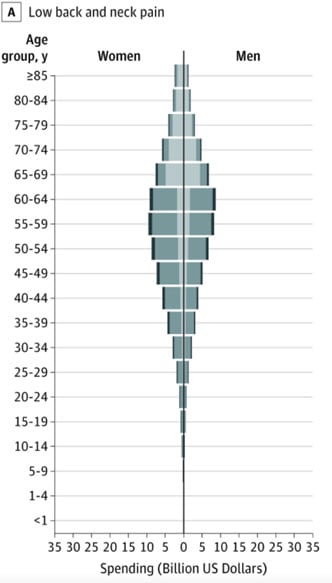
Hospital costs have been increasing, with one study finding a 177% increase in aggregate costs from 2004 to 2015 for spinal fusion surgeries.
Average cost per admission? Over $50,000.
This is a big, expensive problem. And by all indications, it’s only going to get worse.
Who Does Back Pain Affect the Most?
By 2030, 73 million baby boomers – one in five Americans – will be 65 or older.
Studies have found that those over 50 have a 90% chance of some sort of spinal disc degeneration.
That’s why it’s no surprise to learn that spinal fusion surgery was the fifth most popular surgical procedure for the 65 to 79 age group.
Also unsurprisingly, people who go through surgery account for 30-times more costs than those who don’t.
This means the increase in spinal surgeries from this “demographic time bomb” will further strain our overburdened healthcare system.
The cherry on top?
Our rising obesity rate. Studies have consistently shown that being overweight or obese are risk factors for low back pain in both men and women.

All these point to a surge in the number of spinal surgeries in the coming years.
This is nothing new. Spinal fusion surgeries have been increasing for years. One study found a 62.3% increase between 2004 and 2015. And the greatest increases were among those 65 or older, which increased by a whopping 138.7%.
This growth is despite the painful consequences that occur with failed back surgery, and also highlights the opportunity for procedures that reduce the surgical suffering of open operations.
The Evolution of Back Pain Treatment
One of the first spinal surgeries was credited to an American orthopedic surgeon named Dr. Berthold Hadra.
In 1891, he successfully fused the spine of a patient suffering from a fracture dislocation… by wrapping wires around his spinal column.
In 1909, German surgeon Dr. Fritz Lange was the first to do spinal fusion surgeries on scoliosis patients. He used celluloid bars, steel, and silk wiring to straighten the spine.
Then in 1911, Dr. Russel Hibb, chief surgeon at New York Orthopedic Hospital, developed his own novel technique based on knee surgeries.
Dr. Fred Albee of the New York Postgraduate Hospital incorporated Hibbs’ technique and modified it to use bone grafts from the tibia into spinal fusions.
But the excitement around spinal surgery soon faded, as patients began to report poor recovery experiences.
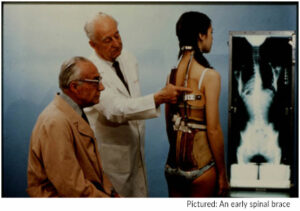
One popular development was the Harrington Rod, where a steel rod was literally “bolted” onto the patient’s spine. The idea was to help provide more stability to spinal fusion and reduce the curvature. Up to one million people had these implanted to treat scoliosis between the early 1960s and the late 1980s.
Still, patients during this period typically experienced “six to nine months of immobilization and frequently reported infection, fusion failure, and loss of correction.”
One of the first spinal surgeries was credited to an American orthopedic surgeon named Dr. Berthold Hadra.
In 1891, he successfully fused the spine of a patient suffering from a fracture dislocation… by wrapping wires around his spinal column.
In 1909, German surgeon Dr. Fritz Lange was the first to do spinal fusion surgeries on scoliosis patients. He used celluloid bars, steel, and silk wiring to straighten the spine.
Then in 1911, Dr. Russel Hibb, chief surgeon at New York Orthopedic Hospital, developed his own novel technique based on knee surgeries.
Dr. Fred Albee of the New York Postgraduate Hospital incorporated Hibbs’ technique and modified it to use bone grafts from the tibia into spinal fusions.
But the excitement around spinal surgery soon faded, as patients began to report poor recovery experiences.
Research continued, but no breakthroughs were made until the 1950s. The focus of that era was on new bracing and surgical techniques.
One popular development was the Harrington Rod, where a steel rod was literally “bolted” onto the patient’s spine. The idea was to help provide more stability to spinal fusion and reduce the curvature. Up to one million people had these implanted to treat scoliosis between the early 1960s and the late 1980s.
Still, patients during this period typically experienced “six to nine months of immobilization and frequently reported infection, fusion failure, and loss of correction.”
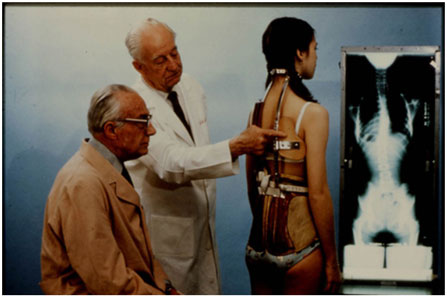
Pictured: An early spinal brace
During spinal surgery, bone grafting plays a vital role in promoting bone healing.
Bone grafts have been used to treat dental and orthopedic injuries since ancient times. Mayans used jadeite, gold, and turquoise for dental inlays, and ancient Romans used gold for dental implants.
The first known use of an autograft (bone from the patient’s own body) was in Germany in 1821. The first use of an allograft (from other donors) was for a humeral defect in a 4-year-old boy in 1879 by Sir William MacEwen.
Iliac crest bone grafting was used as early as 1921, where it was used for the treatment of a fractured mandible (i.e. the lower jaw). The material has strong structural and biological properties and has been used extensively in spinal surgery.
An iliac crest graft is a bone graft in which a piece of bone is removed from the upper region of the pelvis of a patient and implanted into another site within that patient’s body.
These bone grafts are called autografts and are used primarily to replace bone lost to injury or illness.
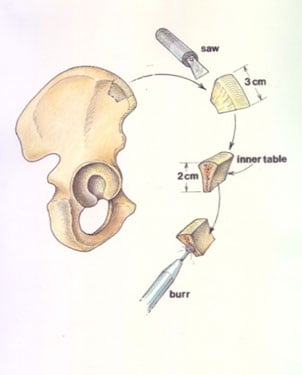
However, the downside of an iliac crest graft is obvious; to get the raw material, the patient requires another surgical procedure, which can increase risk factors, including infection and pain.
That’s why there has been no shortage of alternative methods.
One alternative is something called an allograft, which is when the material used comes from a donor of some kind; One of the first uses of an allograft in spine surgery was in anterior cervical fusion in 1976.
Anterior cervical discectomy and fusion (ACDF) is a type of neck surgery that involves removing a damaged disc to relieve spinal cord or nerve root pressure and alleviate corresponding pain, weakness, numbness, and tingling.
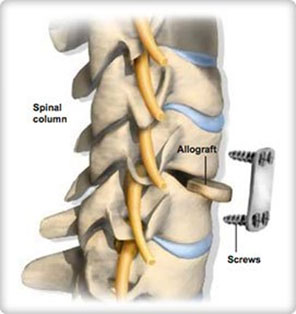
With allografting, not only can the surgeon reduce the risk of problems associated with harvesting bone from the iliac crest…
They can use a large quantity of material during spinal surgery, which is especially important during multilevel fusion.
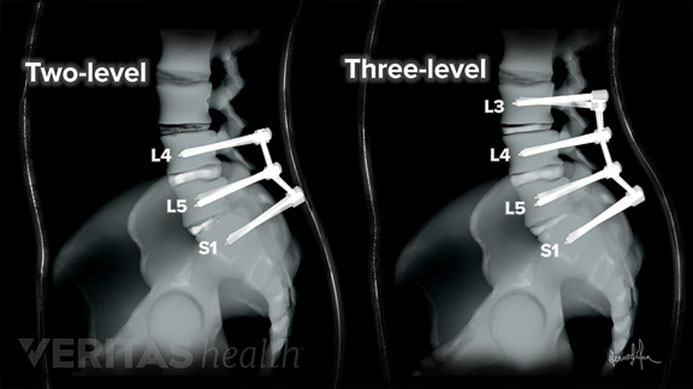
While multilevel spinal fusions are a common and necessary procedure to treat many types of spinal pathology, such as scoliosis or other types of deformity, for treatment of low back pain from lumbar degenerative disc pathology this type of procedure remains controversial.
The rise of bone graft substitutes began with the use of demineralized bone matrix (DBM); The original work surrounding DBM was based on Marshall Urist’s original research on the “morphogenetic” properties of decalcified bone matrix. DBM has been modified and is now frequently used in the augmentation of spinal fusions.
However, the most widely used is something called bone morphogenetic protein (BMP). The pioneering work of Urist showed the potential for BMP to encourage and enhance bone growth.
Original pre-clinical research using recombinant human BMP-2 (rhBMP-2) and rhBMP-7 showed promising results in terms of augmenting spinal fusions. However, the rise in the use of RhBMP-2 in particular has sparked controversy regarding potential serious complications like ectopic bone formation (where bone grows where it’s not supposed to) and possible cancer risks.
Prior to the late 1970s, bone grafts for interbody fusions had a major problem – they tended to collapse or fragment, requiring reoperation. The solution was an interbody “cage” to help take the load of the spine.
Orthopedic surgeon George Bagby first created the ‘‘Bagby Basket,’’ a perforated stainless steel cylinder, for use in horses.

In 1987, the potential of polyether ether ketone (PEEK) polymers in medical applications was suggested. PEEK implants were considered strong enough, and at the same time not too rigid, wear, and fatigue resistant as well as naturally radiolucent, and thus compatible with common imaging: PEEK had all the necessary characteristics to replace titanium implants.
The first PEEK implants reinforced with carbon fibers were used in 1999. Over the past decade a variety of PEEK implants have been introduced and cage technology has exploded.
The progress made in interbody devices also contributed to the next major leap in spinal surgery… minimally invasive surgeries.
Interbody fusions do not require as extensive exposure of the bony anatomy, making their popularity synonymous with the rise of minimally invasive spinal surgeries.
The major breakthrough in minimally invasive spine surgery was the improvement in microsurgery tools and understanding of human anatomy. This allowed for the “Wiltse approach”, whereby the surgeon could gain access to the spine without slicing any muscles.
This meant faster recovery, reduced risk of infection, and a lower chance of accidentally damaging surrounding nerves.
Today, advancements in robotics technology are helping drive further progress in minimally invasive surgeries in general.
The minimally invasive surgery market was already worth $36.5 billion in 2018, and expected to hit $58.2 billion in 2024.
Demand for these less-risky minimally invasive surgeries are surging, especially as the number of people over 65 continue to increase.
And they are a key driver behind the growth of the quickly-expanding $75 billion Ambulatory Surgery Center (ASC) market.

The Little-Known “Rocket Fuel” for the $75 Billion Ambulatory Surgery Center Market
The Little-Known “Rocket Fuel” for the $75 Billion Ambulatory Surgery Center Market
Ambulatory Surgery Centers (ASC) were already estimated to be a $75 billion global market in 2018. By 2026, they are projected to be worth over $120 billion.
The dominant market? North America.
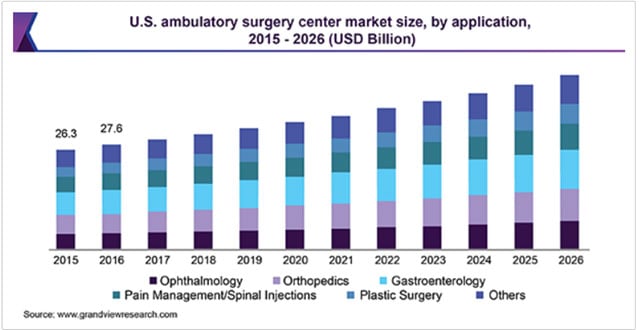
What’s driving the growth of this red-hot market? Here are a few major factors.
With an estimated compound annual growth rate of about 8%, the rising popularity of minimally invasive surgeries goes hand in hand with ASCs.
Because minimally invasive surgeries are safer, faster, and cheaper most would opt for this option if given a choice.
What has held the growth of minimally invasive surgeries back? Technology and training.
Not all surgeries can be done in a minimally invasive manner. But as technology continues to improve, this will only increase.
The other is training.
According to a review of minimally invasive surgery utilization rates in the US:
“Residents and fellows learn in an apprenticeship model, yet for many, the surgeons they learn from may lack advanced skills in minimally invasive surgery.
In a survey of US obstetric and gynecology residency programs in 2006, only 69% had formal laparoscopy training.20 In a national survey of colorectal surgeons in 2009, lack of adequate operative time and formal training were the main reasons cited by the surgeons for not offering laparoscopic colon resections.”
Fortunately, the popularity of minimally invasive surgery has concurrently spurred more training programs for surgeons. But this also shows that if minimally invasive surgeries could be made easier, they would be even more prevalent.
The bureaucracy in our healthcare system is legendary. According to Cath Lab Digest, ASCs are typically able to streamline the registration, admission, and discharge processes.
The result is the patient spends much less time at the facility on the day of the procedure. Compared to hospitals, the magazine notes that:
“The convenience seems to far surpass that of hospital registration and pre-surgical processes.”
Then there’s the cost factor. A paper in the Journal of Spine Surgery found that the cost of performing a surgical procedure in an ASC is 45% to 47% lower compared to hospitals.
This “cost gap” has only been increasing.
In 2003, Medicare paid hospitals only 16% more, on average, than it paid ASCs for the same procedure. In 2019, Medicare paid hospitals 82% more than ASCs for outpatient surgery.
This is a big difference with big implications for our strained healthcare system.
The paper estimates that 48% of outpatient procedures are done at ASCs – saving $37.8 billion in healthcare costs for the commercially-insured population. If all outpatient procedures were done at ASCs, $41 billion more in savings could potentially be realized.
The growth in ASCs is good for our healthcare system (and the patients’ pockets). But it’s also good for their owners, who are often the surgeons themselves.
90% of ASCs in the US have at least some physician ownership, with 65% of them being solely owned by physicians.
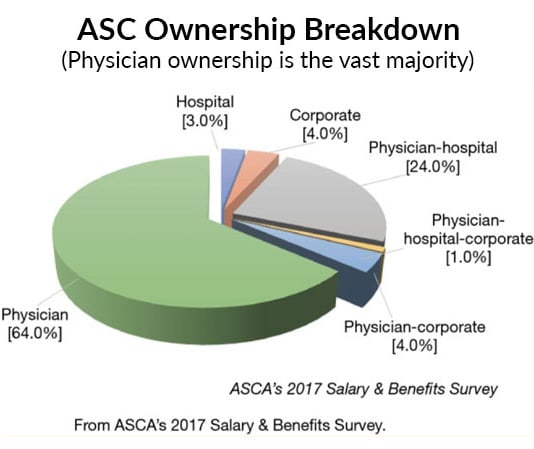
Professional fee reimbursement has continued to decline over the last few decades. Meanwhile overhead and operating costs have increased.
This has driven physicians away from private practice and toward employment with hospitals. The problem? They lose a lot of their autonomy.
ASCs are thus a profitable “side hustle” for many surgeons.
The trend of decreasing professional fee reimbursements shows no signs of stopping; The Center for Medicare & Medicaid Services’ Physician Fee Schedule rates for 2021 were 3.3% lower than 2020.
The kicker? If it wasn’t for the last minute stimulus bill in December 2020, the Consolidated Appropriations Act, the rates for 2021 would have been 10.6% lower.
So, the pandemic may have curbed some of the decline for physicians. But the trend is clear, and physicians are likely to continue to shift toward ASCs mainly for financial reasons.
Speaking of the pandemic, it has also provided a boost to ASCs.
The cherry on top of the ASC growth story is the pandemic. The fear of contracting COVID-19 is driving patients away from hospitals and towards ASCs, with a survey finding that 46.2% of people saying that they would request the surgery take place at an ASC instead of a hospital.
As Dan Murrey, MD, chief medical officer of Surgical Care Affiliates in Deerfield, Illinois, said in a June 2020 interview, patients who have had their elective procedures halted due to the pandemic are now “anxious to have surgery done.”
For the sake of understanding how the Kleiner Device Labs KG System plays in this ecosystem, it makes the most sense to drill down into the spinal fusion device market.

A Potential $13.85 Billion Up for Grabs
The global spinal fusion devices market was worth $6.37 billion in 2018 and expected to hit $13.85 billion by 2026.
According to Fortune Business Insights, North America would dominate the global market share for one key reason:
“Significant rise in the number of spinal fusion procedures in ambulatory surgical centers (ASCs) and outpatient settings…Spinal fusion procedures in ASCs are resulting in significant cost saving, which is projected to further propel the segment”
It also noted that:
“According to the CDC, over 20.4% of US adults were suffering from chronic pain and 8.0% of the US adults had high-impact chronic pain in 2016. This is expected to augment the demand for spine fusion implants in the US during the forecast period ”
Add our rapidly aging populace to the mix, and you have a situation where the demand for spinal fusion implants is likely to only keep increasing.
Of course, spinal fusion devices are a broad market covering a variety of medical devices.
Out of all the spinal fusion devices on the market, interbody cages – like the KG2 – are a market estimated to be worth $2.31 billion by 2023.
The KG2 may only be targeting the interbody cage submarket for now. But once Kleiner Device Labs receives the funding it needs to roll out its full product pipeline, it’s coming for the entire thing.
The Road to FDA Clearance
As a medical device, the KG2 must register annually with the FDA once it’s on the market.
The KG2 must also get FDA 510(k) approval, called the “premarket notification.” Getting this approval means the device can be legally marketed in the US.
Even better, the 510(k) route is the “fast track” to getting a medical device released on the market.
All Kleiner Device Labs needs to show is that the KG2 is “safe and effective, and substantially equivalent to a legally-marketed device” in a similar category.
Once it’s cleared, the company can then take it to market.
With the ability to profitably pay up to 50% in commissions (thanks to it being 3D-printed), this means Kleiner Device Labs has the ability to incentivize an army of highly motivated sales representatives…
Showing surgeons, ASCs, and hospitals across the continent why the KG2 – along with the entire KDL KG System – deserves to be the new standard in spinal surgery.


The company is also targeting to get something called a “CE mark” in the fourth quarter of 2021, which will also allow them to begin selling the KG2 in the European Union.
Because the “back pain epidemic” is far from a US-only problem…
Spinal Surgeries on the Rise Globally

Out of all spinal surgeries, interbody fusions comprise the lion’s share of that market, with about 352,000 carried out annually.
The number of spinal surgeries per 100,000 adults have also risen from 60.4 in 2004 to 79.8 in 2015. For those over 65, the increase was from 98.3 to 170.3.
However, this trend is also not limited to just the US. It’s global.
Studies have found similar increases in Japan, Korea, Canada, Australia, the United Kingdom, and Norway.
So it’s no surprise that the industry giants are multi-billion dollar players.

It is estimated that surgeons perform 1.6 million instrumented spinal fusions per year in the US.
Out of all spinal surgeries, interbody fusions comprise the lion’s share of that market, with about 352,000 carried out annually.
The number of spinal surgeries per 100,000 adults have also risen from 60.4 in 2004 to 79.8 in 2015. For those over 65, the increase was from 98.3 to 170.3.
However, this trend is also not limited to just the US. It’s global.
Studies have found similar increases in Japan, Korea, Canada, Australia, the United Kingdom, and Norway.
So it’s no surprise that the industry giants are multi-billion dollar players.
A Look at “Big Spine”…
Medtronic – the biggest player – had a market cap of almost $160 billion as of February, 2021.
On the same date, the market had valued Stryker at over $90 billion, Zimmer Biomet at over $33 billion, and Globus Medical at almost $7 billion.
And NuVasive, which is primarily focused on the minimally invasive spinal surgery market, was worth over $3 billion.
But perhaps more impressive is the raw amount of revenue some of these companies generate from spinal surgery related products.
That’s why it shouldn’t be a surprise to see these larger players using their war chests to grow through acquisitions.
“Big Spine’s” Acquisitions Strategy
The largest “mega acquisition” in the industry was when Johnson & Johnson acquired DePuy Synthes in 2011 for a whopping $21.3 billion.
Of course, DePuy Synthes was already a major player in the spinal surgery market by then.
But on a slightly smaller scale, we have seen the big spinal surgery players acquire smaller companies in order to add their latest innovation to their own portfolio.
Here are just a few of the significant acquisitions we’ve seen in the last few years…
It’s called “innovation by acquisition”. Some may see it as stagnation…
But for companies like Kleiner Device Labs, it’s a huge exit opportunity.
Why? Because the major players understand that spinal surgery has a “perpetual demand.”
That’s why they have the potential to turbocharge the growth of the $75 billion ASC market by helping them overcome the key challenges holding them back.

And rightfully so. With a 25% to 35% failure rate even for minimally invasive surgeries and the dire consequences of an unsuccessful fusion being – greater pain, expensive follow up surgeries, poor quality of life, and even a chance of developing an opioid addiction – who can blame them?
In fact, one study found that:
“Lumbar fusions performed in the ambulatory setting have been associated with relatively high hospital re-admittance and emergency room visit rates (15%) compared to analogous procedures performed in the hospital setting (4%)”
Even so, spinal surgeries are already a key profit driver for ASCs, representing 20% to 25% of their orthopedic procedures but contributing over 50% to the profit.
If spinal surgeries were made safer, the demand for spinal surgeries at ASCs could surge.
Not only could they see more demand from people choosing ASCs over hospitals, but also from people who might have been previously too afraid to undergo spinal surgery (for very good reasons).
With 9 in 10 ASCs in the US being at least partially-owned by physicians or surgeons, and a full 65% of them being fully-owned, surgeons are taking high financial risk by performing surgeries with lower success rates.
According to LeverageRX’s 2019 Medical Malpractice Payout Report, an eye-watering $4.03 billion was paid to plaintiffs in 2018. 21.4% of all malpractice allegations were related to surgery, the second highest behind diagnosis.
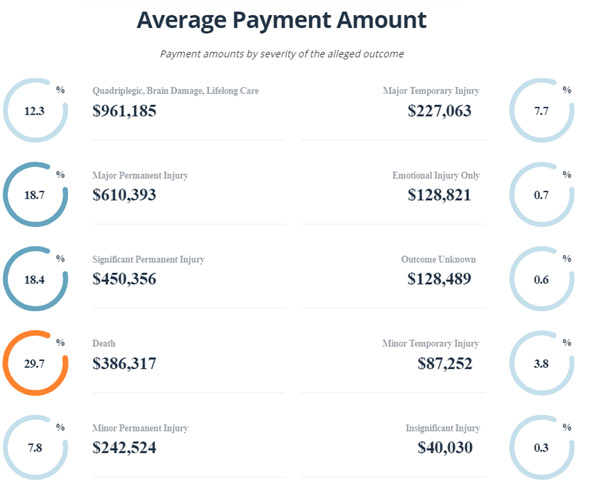
And if you think your health insurance premiums are high, consider that specialized surgeons pay an average of $34,000 a year, according to the Medscape Medical Malpractice Premium Report 2019.
Throw in the additional financial risk from being an owner of the surgical center itself…
And you can see why some surgeons might think twice about performing spinal surgeries in their own ASCs – thus depriving ASCs of a key profit driver.
Minimally invasive spinal surgeries are delicate, highly complex procedures. One small slip during one of the many steps and you might risk damaging surrounding tissue or a vital structure.
Not to mention the fact that you’d be working with a much smaller incision, and having to use a microscope to see what you’re doing most of the time.
At the same time, surgeons cannot afford to be left behind as minimally invasive surgeries continue to grow in popularity – especially if they want to enjoy the financial rewards of being an ASC owner.
But they must learn how to do these surgeries on top of their hectic schedules, creating a time barrier to entry for surgeons aspiring to move into ASCs.
This barrier could be lowered if minimally invasive surgeries were less complicated.
According to the AORN Journal, physician engagement is one of the most significant challenges an ASC will face.
In other words, there needs to be more incentives for surgeons and physicians to switch over to ASCs.
We’ve already identified two of the “disincentives” – financial risk and the steep learning curve of minimally invasive surgeries.
These only add to the broader challenge.
ASCs need more surgeons to grow. And surgeons need compelling rational reasons to move to ASCs.
The Centre for Medicare and Medicaid Services is using bundled payment models to reduce rising healthcare costs. In this format, a standalone ASC is paid one fee for the procedure performed, no matter the cost to the center.
The bundle model has extended to the lucrative spinal surgery market, with the spine bundle program being introduced in 2013.
This means that the higher the cost of the procedure for the center, the lower their profit margins. The opposite also applies; if the costs of the procedures could be lowered, ASCs could boost their profit margins.
Add in the fact that supply and equipment costs for ASCs are rising faster than reimbursements, and you can see that ASCs must find a way to alleviate some of their cost pressures if they are to fully realize their potential.
Simple, but not easy.
Spinal surgeries are already a big money-maker for ASCs. The tradeoff is that their failure rates scare away both potential customers and the surgeons needed to operate the ASCs.
Add on cost pressures and the steep learning curve it takes for surgeons to learn the skills necessary to perform minimally invasive spinal surgeries at ASCs, and you have the root of the problem:
Spinal surgeries are considered too risky by many surgeons and customers.
Of course, this is not a new problem…
Over the years, there’s been no shortage of attempts to improve the success rates of spinal fusion.
The most popular path was something called “surface technology” – a process of manipulating the surface of the interbody cage itself to increase the chances of bone growth.
A company called Titan Spine created a new type of interbody cage with a surface that could ostensibly improve the success rates, and was acquired by Medtronic for a rumored almost $500 million.
Although hundreds of millions of dollars might have flowed into that technology, the truth is, surface technology alone does not lead to successful fusions. Effective bone graft delivery remains critical for successful surgical outcomes.
The KG2 maximizes the volume of graft delivered while including that surface technology in the same device.
You see, all these other companies focus strongly on the interbody cage device itself. Because in the end, they are just widget makers trying to sell more widgets. In that respect, it’s far easier to iterate on what’s already been done versus innovate and try something new.
It was hiding in plain sight, in the most tedious part of the process that every surgeon hates – getting the bone graft into the disc space.
As a surgeon, Dr. Kleiner saw first-hand how difficult it was to get the right amount of bone graft into the disc space – not to mention having it fill the entire cavity properly.
Most surgeons and medtech companies ignored fixing the grafting problem simply because it was hard to do.
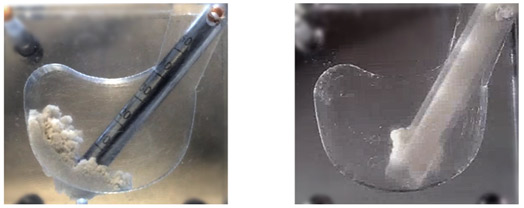
Round cannulas have limited ability to disperse grafting material (left) and also have the potential for clogging or jamming (right).
If the proportions are wrong, the insertion system can get clogged. If that happens, now the surgeon has to pull it out, unclog it, and try again. Once that’s done, the surgeon ends up with the mantle of graft material which can wind up in the wrong place.
The Kleiner Device Labs KG™ System improves and streamlines the entire process by allowing more bone graft material to be delivered – and for both the graft delivery and cage implantation to be done – in a single continuous step.
The key was looking at how the entire procedure could be improved, instead of single solution placeholders.
Because no matter how well-built the cage is, it will fail without the graft material.
However, when it comes to selecting graft material, every surgeon has their own preferences when it comes to brands they buy.
The Kleiner Device Labs KG™ System was designed with this in mind.
Instead of competing with bone graft companies, they’ve created a new system that maximizes the volume of graft delivered, and is compatible with the wide spectrum of different grafting products on the market.
It’s a symbiotic relationship. A company makes better bone graft material – and the Kleiner Device Labs KG™ System can deliver more of that improved material quickly and efficiently into the spine.
It’s a win-win scenario, which is why many bone graft companies are counting on Kleiner Device Lab’s success.
Some investors might be wondering about other potentially competing medical technologies – like disc replacement and stem cell injections – that might provide an answer for this back pain epidemic…
However, according to Contemporary Spine Surgery…
For this reason, Kleiner’s management team isn’t concerned with these potentially breakthrough future medical technologies entering the market any time soon.


The Kleiner Device Labs KG System
“It transforms a complex, multi-step process into a simple, single-step procedure”
Most things are obvious in hindsight…
If you’ve ever heard the expression a “square peg in a round hole,” the most popular spinal fusion techniques literally attempt to fit a round peg into a square hole; the funnel for delivering the bone graft had a round opening – even though the opening for receiving the bone graft was rectangular.
According to the Kleiner Device Labs management team…
Everyone in the industry was thinking “well, we have this round device and we have to deal with it.”
The thing that created this difference was recognizing you don’t need something round to deliver the bone graft.
Dr. Kleiner’s innovation was to re-engineer the insertion system to match its shape to the opening in the spine; literally creating a square peg to fit a square hole.
The result?
Up to a 400% increase in the surface area for the graft to flow through…
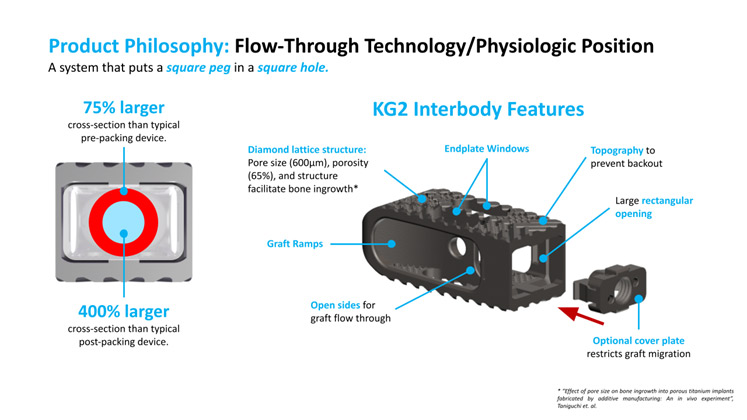
And with it, a new technology that has the potential to solve the major problems facing minimally invasive spinal surgery.
Kleiner Device Labs Solution #1:
To reiterate an earlier statement, the logic behind spinal surgery is simple: stop the motion, stop the pain.
The way to achieve the “stop motion” in the spinal fusion is to get the bone to grow into that space. To do this, two things must be accounted for…
However, each person – and each surgery – is different.
A “one size fits all” solution simply won’t cut it. It needs to be customizable based on the surgeon (and patients) specific needs.
Unlike many medical devices, the KG2 is 3D-printed. This means the product can be produced in a modular fashion; parts are movable and modifiable.
The opening at the back of the tray is rectangular, matching the shape of the hole made in the disc and maximizing surface area (75% larger than common circular shape) for bone graft infusion.
When combined with an “I-beam” design – which allows bone graft to flow out the sides of the interbody cage implant – the device can deliver up to three times the amount of bone graft into the disc space relative to the amount of disc material removed.
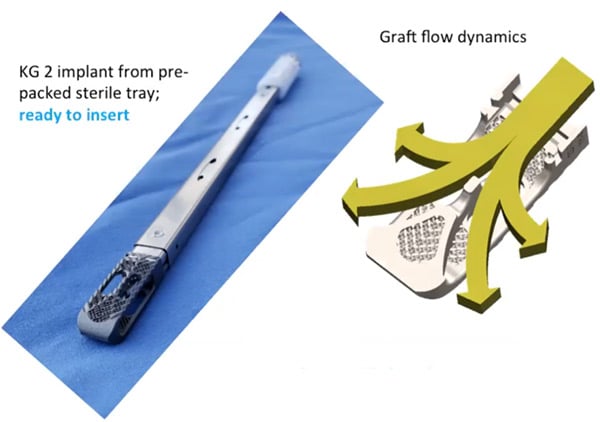
Also, because of this unique design, there is far less risk of grafting material to get jammed in the tube.
The cage is embedded together with the bone graft infusion, allowing multiple steps to be done almost simultaneously. This, in turn, results in less potential damage to nerve tissue from multiple entries/exits.
According to Kleiner Device Labs management…
“We are the first to look at maximizing delivery of bone graft, and do it in a simple fashion.
This is a strategy everyone is familiar with. It goes back to the days of fracture healing in the earliest recorded times in history. You bring some scaffold and cells and bone graft material. It’s basically the glue that helps the bones heal.
What we’ve done is made that process, we’ve streamlined it and eliminated the steps in delivering it, and the consequences are markedly better clinical outcomes.”
By itself, this massive increase in bone graft delivery already produces better results…
But in addition to this, the surgeon also needs to do everything possible to minimize any potential malpractice risk during the surgery.
Kleiner Device Labs Solution #2:
As stated earlier, the longer the operation is – and the more steps required to complete – the higher the chance something can go wrong.
In many ways, minimally invasive spinal surgery is like building a ship in a bottle.
However, whenever medical devices are put into the human body, the risk of infection is very real.
According to the Kleiner Device Labs team…
“If it’s not disposable, it’s not safe. The problem is, a lot of spinal surgical equipment isn’t disposable. This means potential problems if equipment hasn’t been properly sterilized between uses.”
Because the KG2 is 3D-printed, it can be produced at far cheaper costs than competing products, which in turn makes it disposable.
The KG2 comes in a pre-packed single-use tray. This means the surgeon can have full confidence the equipment being used is sterilized before they ever enter the operating room.
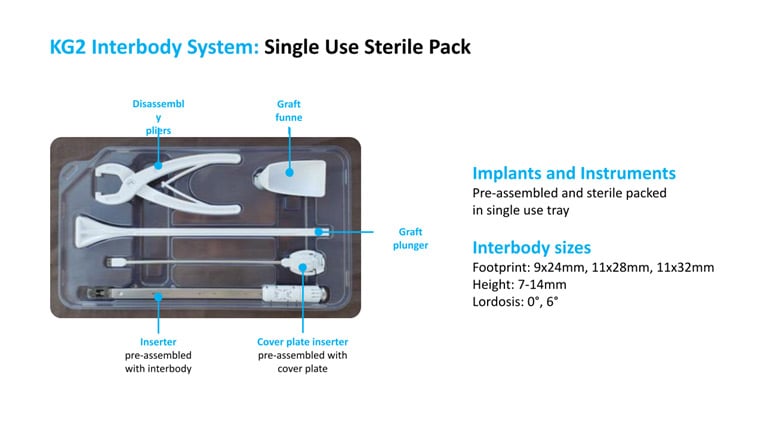
This becomes increasingly important with regards to the rise of ASCs. Many of the surgeons are financial partners with these ASCs and are taking on the risk to achieve the reward of more money.
However, the main challenge is getting mass adoption of the technology is this: Doctors want it, but they need to have complete confidence they can use it effectively.
Kleiner Device Labs Solution #3:
As the saying goes, “you can’t teach an old dog new tricks”…
However, for many surgeons, they must adapt to new ways of surgery or risk becoming obsolete.
Practically speaking, it’s harder to build a ship inside of a bottle than it is to cut open the bottle and put a ship inside of it.
For surgeons who must transition from open theatre to minimally invasive surgery, they have to be willing to learn how to do something that is potentially outside of their current competency.
Many surgeons look at the steep learning curve to learn minimally invasive spine surgery and feel intimidated.
Logically speaking, why would a surgeon want to invest the time and effort into learning how to do something that’s harder and riskier?
Surgeons want to be able to provide the safest and most efficacious treatment to their patients.
If this can be done without the pain of a steep learning curve, makes their job easier, their outcomes better and their complications fewer… than the chance of adoption grows.
Surgeons are raving about how easy Kleiner’s technology is to use:
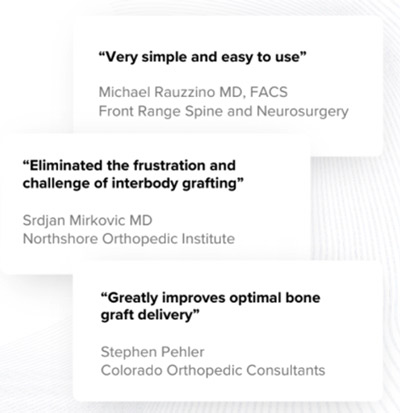
The Kleiner Spinal Surgical System transforms a complex, multi-step process into a simple, single-step procedure…
And by extension reduces surgical risk, surgeon fatigue, and operating time.
Kleiner Device Labs Solution #4:
Before COVID-19, there was already a clear shift towards the ASC model; When given the choice, patients will choose a lower-cost, out patient experience over an extended hospital stay.

According to a 2019 report by Bain & Company…
ASCs performed more than half of all outpatient surgeries in 2017, up from 32% in 2005, and their influence is set to increase. Bain research shows procedures performed at ASCs will grow by an average 6% to 7% a year through 2021, up from 4% to 5% over the past three years.
Orthopedic, spine and cardio procedures will grow the fastest.
That shift will increase price pressure on medical devices and products because ASCs have lower reimbursement rates and ASC-based physicians are more price sensitive than their hospital-based peers are.
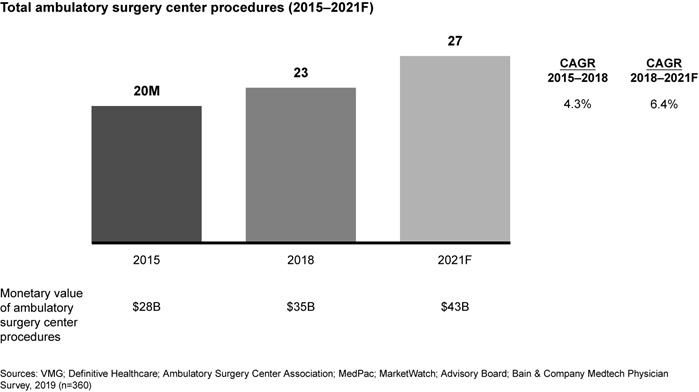
Perhaps most interesting of this trend is how the broader healthcare industry is responding. Hospital networks are acquiring ASCs to recapture lost business. Payers are enthusiastic about the shift to lower cost setting, with some becoming ASC operators themselves.
For physicians, the allure is obvious. The opportunity to own equity and increase their control over how medical care is delivered can’t be ignored.
And according to the same Bain survey….
Our analysis shows single-specialty centers focused on orthopedics, cardiology and spinal surgery will see the fastest growth in volume of procedures through the mid-2020s. These centers also are likely to have a higher average reimbursement per procedure. Let’s take a closer look at the ASC growth dynamic in each of these specialties.
Cardiology, spine and orthopedic procedures will fuel rapid growth of ambulatory surgery centers through the mid-2020s
Even more appealing for physicians? Spine procedures are among the most profitable for ASCs (and by extension a boon for spine surgeons looking to make the jump).
COVID-19 merely threw jet fuel on this inevitable trend.
William Rambo, MD. of Midlands Orthopaedics & Neurosurgery says:
“Pandemic pressure has increased patient awareness of ASC alternatives for all surgeries. Throughout the pandemic, many ASCs were able to safely offer spine surgeries needed to address significant neural compression or to relieve severe pain.
Additionally, some hospitals have been slow to resume elective surgery as they remain focused on COVID-19 response and are still navigating staff shortages due to furloughs of critical support personnel.”
Choll Kim, MD, PhD. Spine Institute of San Diego predicts:
“The COVID-19 crisis, while devastating, may give us the needed “activation energy” to pursue this important effort, which in turn will stimulate advancements in MIS technologies, ERAS, cost efficiency, customer service, complication management, and most importantly greater surgeon engagement in facility operations. I see a perfect storm brewing. The COVID-9 crisis has brought it much closer to land.“
Michael Smith, MD. of Rothman Orthopaedic Institute reports:
“ASCs, especially with an overnight nursing option, and facilities that can extend care for 1-2 postoperative days should be able to accommodate a significant majority of spinal care. Minimally invasive techniques support this transition.
Surgeon ownership and management of these centers can build efficiencies for the physicians and the patients that are structurally impossible in a large and complicated hospital.
For those of us who have really only known life in academic medical centers, where the surgeon’s control of anything other than the actual cutting is very limited, could find this a brave and bright new world.”
And perhaps the most exciting part of this potentially “brave and bright new world?”
Kleiner Device Labs Solution #5:
The cost savings of the ASC model simply cannot be ignored; ASCs provide cost-effective care that saves the government, third party payers, and patients money.

According to the Ambulatory Surgery Center Association:
During the eight-year period from 2011 to 2018, the total Medicare savings generated by ASCs was $28.7 billion. During the 10-year period from 2019 to 2028, projected total Medicare savings generated by ASCs is estimated to be $73.4 billion.
Healthcare analysts project that 85 percent of all healthcare procedures will be performed outpatient by 2028, due in large part to advances in specialties like orthopedics, cardiology and spine, which are still overwhelmingly performed on an inpatient basis.
However, the ASC model is under pressure thanks to COVID-19. Even though the Coronavirus Aid, Relief, and Economic Security Act provided critical economic relief to many orthopedic practices last year, help didn’t come without its price.
Surgeons expected CMS reimbursement and physician fee cuts, but many providers were shocked at how steep they were — initially an up to 10.2% decrease for some specialists.
Faced with this real economic pressure, the ASC ecosystem will need to adapt to control costs.
According to Alok Sharan, MD, of NJ Spine and Wellness in East Brunswick…
“Medical device companies will have to adapt to this new normal and offer services to surgeons to help them transition their practice to the outpatient space”
And the Kleiner Devices Labs team is in position to supply this growing market – which demands safety, improved outcomes and quicker return to function at a lower price – with exactly what it needs…
An elegant product that lowers costs, increases profits, reduces risks, and creates better results for patients.
The cost savings of the ASC model simply cannot be ignored; ASCs provide cost-effective care that saves the government, third party payers, and patients money.
According to the Ambulatory Surgery Center Association:

Healthcare analysts project that 85 percent of all healthcare procedures will be performed outpatient by 2028, due in large part to advances in specialties like orthopedics, cardiology and spine, which are still overwhelmingly performed on an inpatient basis.
However, the ASC model is under pressure thanks to COVID-19. Even though the Coronavirus Aid, Relief, and Economic Security Act provided critical economic relief to many orthopedic practices last year, help didn’t come without its price.
Surgeons expected CMS reimbursement and physician fee cuts, but many providers were shocked at how steep they were — initially an up to 10.2% decrease for some specialists.
Faced with this real economic pressure, the ASC ecosystem will need to adapt to control costs.
According to Alok Sharan, MD, of NJ Spine and Wellness in East Brunswick…
“Medical device companies will have to adapt to this new normal and offer services to surgeons to help them transition their practice to the outpatient space”
And the Kleiner Devices Labs team is in position to supply this growing market – which demands safety, improved outcomes and quicker return to function at a lower price – with exactly what it needs…
An elegant product that lowers costs, increases profits, reduces risks, and creates better results for patients.

And today, you have the opportunity to invest in what could potentially become the future of spinal surgery here in America – and around the world – for the next decade (or more).

Ready to invest in the future of Spinal surgery?
Click the button below to get started…
During 25 years as a spinal surgeon Dr. Kleiner became progressively more focused on decreasing the amount of pain that his surgical patients experienced. The minimally invasive techniques that surgeons wanted to perform were hampered by instruments that created longer procedures and compromised the outcome.
He, in collaboration with senior engineers having extensive expertise the spinal implant technology, developed a suite of tools designed to make it easier to perform less painful, minimally invasive spine surgery. Those tools produced better patient outcomes, reduced operating time, and lowered costs for all stakeholders.
We intend to create a fundamental change in the way that modern spinal fusion surgery is performed.
The result will be the adoption of our multiple patented system of ideas, implants, and strategies because they are simpler to perform, provide superior results, and have a nearly universal acceptance by surgeons.
By recognizing that the most important barrier to achieving spinal fusion could be eliminated with elementary physical principles, KDL has created a solution to the most vexing and tedious problem in intervertebral surgery: eliminating the challenge of bone graft delivery to the prepared disk space.
Because there did not seem to be an answer to the frustrating and tedious process of bone graft delivery, the industry had all but abandoned this essential part of the operation.
The desperation for an answer became so acute that a company (Titan Spine) which predicated its existence on the unproven notion of implant surface topography being sufficient to eliminate bone grafting was purchased by Medtronic for a rumored $480M.
KDL has solved the bone graft delivery dilemma with a process that will become the fundamental standard for the interbody spinal fusion. The application of this foundational approach is amenable to open or minimally invasive approach and because of the KDL KG 2 system, it can be easily performed in hospitals, ambulatory surgery centers and in countries with more primitive surgical settings.
"As a spinal surgeon and as a patient who has had spinal surgery, I wish this strategy and system was available to me. It would be the greatest contribution I could imagine to provide to patients and doctors alike."
We want KDL technology to be the platform that all interbody spinal fusion surgery relies upon. Judging from the response that our presentation has had upon medical device companies and surgeons, we believe that this can be achieved.
If we can make a company designed for patients and doctors, we can bring along the other stakeholders and make them happy as well (insurance carriers, hospitals, and other medical device companies).
But if I had to boil it down to one tangible goal, I’d like our technology to deliver a spinal fusion success rate of as close to 100% as possible.
There are many variables that have to be satisfied to bring about a successful spinal fusion surgery If we can eliminate the technical issues of making patients and doctors life simpler, we have won a major battle…the next step will be branching out into diagnostic arenas so we that we can reliably bring the best surgical candidates to the operating room.
That decision is determined by several clinical considerations: making sure patients are emotionally stable, that we have the correct diagnosis, and the operation is performed technically well.
Where we are now is helping people with the technical part, but we owe it to our doctors and patients to do the other parts well.
At Kleiner Device Labs we have developed novel, patented devices that allow spine surgery to be less painful, less expensive, and provide improved surgical outcomes.
1) Developed, patented, and prototyped the company’s first product, the KG1 bone graft delivery tool. This was a capital efficient means of building out the company brand, distribution network, manufacturing partnerships, and overall proof of concept.
2) KG 1 prototype device first used in surgery July 24, 2012.
3) KG 1 prototype used successfully in 200 patients August 2014.
4) KG 1 clinical research culminates in the first peer reviewed manuscript published in 2016.
Kleiner JB, Kleiner HM, Grimberg EJ Jr and Throlson, SJ. Evaluation of a Novel Tool for Bone Graft Delivery in Minimally Invasive Transforaminal Lumbar Interbody Fusion. Medical Devices: Evidence and Research,
2016, 9:105-114.
5) KG 1 is officially launched commercially available December 2018
6) In 2018 and early 2019 KDL raised $634,000 at a pre valuation of $15.8 million.
7) In 2019 BAAT, an approved supplier for many of the largest orthopedic companies, agreed to work with KDL to complete KG2
8) In 2020 KG 2 was successfully implanted into a cadaver and multiple pig spines.
9) KDL expects to file for 510k FDA clearance for KG2 in Q2 of 2021 and CE mark will likely be awarded in October of 2021.
1)
Developed, patented, and prototyped the company’s first product, the KG1 bone graft delivery tool. This was a capital efficient means of building out the company brand, distribution network, manufacturing partnerships, and overall proof of concept.
2)
KG 1 prototype device first used in surgery July 24, 2012.
3)
KG 1 prototype used successfully in 200 patients August 2014.
4)
KG 1 clinical research culminates in the first peer reviewed manuscript published in 2016.
Kleiner JB, Kleiner HM, Grimberg EJ Jr and Throlson, SJ. Evaluation of a Novel Tool for Bone Graft Delivery in Minimally Invasive Transforaminal Lumbar Interbody Fusion. Medical Devices: Evidence and Research,
2016, 9:105-114.
5)
KG 1 is officially launched commercially available December 2018
6)
In 2018 and early 2019 KDL raised $634,000 at a pre valuation of $15.8 million.
7)
In 2019 BAAT, an approved supplier for many of the largest orthopedic companies, agreed to work with KDL to complete KG2
8)
In 2020 KG 2 was successfully implanted into a cadaver and multiple pig spines.
9)
KDL expects to file for 510k FDA clearance for KG2 in Q2 of 2021 and CE mark will likely be awarded in October of 2021.
Overall: To date KG2 has hit the milestones set by independent 3rd party partner BAAT.
At Kleiner Device Labs, we strive to foster an environment of engineering innovation, guided by surgeon insight. We value intellectual curiosity, innovative design & “outside the box” thinking, personal and organizational accountability, and confidence tempered with humility.

Jeff Kleiner, MD (President + CEO)
During 25 years as a spinal surgeon Dr. Kleiner became progressively more focused on decreasing the amount of pain that his surgical patients experienced. The minimally invasive techniques that surgeons wanted to perform were hampered by instruments that created longer procedures and compromised the outcome.
He, in collaboration with senior engineers having extensive expertise the spinal implant technology, developed a suite of tools designed to make it easier to perform less painful, minimally invasive spine surgery. Those tools produced better patient outcomes, reduced operating time, and lowered costs for all stakeholders.

Alan Burkholder (CTO)
Alan graduated from Case Western Reserve University with an MS and BS in Mechanical engineering and from Goshen College with a BA in Physics. He started his engineering career over 20 years ago at Energizer Battery Company working on high speed production equipment design and has been working in spine product development for the last 13 years, during which time he served as Director of new product development for Zimmer Biomet Spine.
Alan ramped up to full-time in August of 2019 and will accelerate our upcoming products. He has been working with Dr. Kleiner and Dr. Causey over the past year on the fusion cage design prototype and its prospective July 2020 alpha launch.
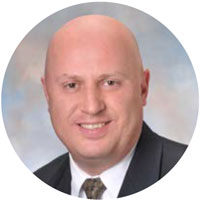
Konstantin Caploon (Chief Legal Officer)
Konny is a seasoned and business-oriented attorney with executive management experience. Corporate experience as head of IP, and as general counsel. Significant work with business strategy, innovation, risk management, budgeting, IP portfolio management, litigation, L&A, transactional matters, negotiation, dispute resolution, healthcare compliance, client communication and counseling.
Konny has nearly 20 years of experience as an attorney and served as general counsel for the Biomet Bone Healing business.
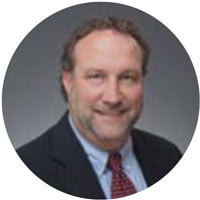
Dan Murray (COO)
Dan Murray has over 35 years of finance and operational experience in a broad range of medical device and technology companies, from small start-up organizations to large, multinational, public corporations.
His experience includes venture capital and debt financing, initial public offerings, and merger and acquisition transactions, as well as expertise in all levels of financial, sales and marketing management.
Currently Dan is the consulting CFO for sports medicine startup Moximed, which is dedicated to improving the standard of care for patients with knee osteoarthritis.
Prior to this role, he was Chief Operating Officer and Chief Financial Officer of SI-BONE, Inc., a minimally invasive sacroiliac joint surgery company, where he drove commercialization of the iFuse Implant System from zero to over 16,000 procedures and over $150 million of cumulative revenue in five years.
Mr. Murray was VP and Chief Financial Officer of Cayenne Medical, a multi-disciplined sports medicine start-up. Mr. Murray was the Corporate Controller for St. Francis Medical Technologies, and was instrumental in the $725 million acquisition of St. Francis by Kyphon Inc. in January 2007 and the subsequent integration of the business operations into Kyphon.
Mr. Murray has a Masters in Business Administration from the University of Texas at Austin and a Bachelor of Science degree in Accounting from San Jose State University. He is a Certified Public Accountant (inactive) in the State of California.

Harris Kirschner (CFO)
Harris Kirschner is responsible for optimizing the financial performance of Kleiner Device Labs and has served as CFO since the company’s inception.
Harris graduated from the University of Denver with a B.A. in Finance, and a double minor in Economics and International Studies. He is currently a partner at 3rd Creek Investments where he focuses on driving the success of small businesses. Over the years he has gained experience in tax, financial management,accounting, audit, and private investments.
Harris also served as an advisor for 3rd Creek Foundation, a private philanthropic foundation focused on international poverty alleviation and is still on the finance committee for the charity.
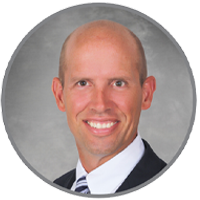
Jack Maertens
Jack Maertens is an accomplished leader in the medical device industry with multi-faceted experience in sales and marketing for over 20 years. He has held leadership roles in sales and marketing at companies which include Zimmer Spine for 8 years, Globus Medical for 7 years, and Smith and Nephew for 5 years.
Jack is currently using his expertise and experience to set up the Alpha Launch for KG2. One of Jack’s notable prior successes was a product launch that generated $18M in year one and $27M in year two at Zimmer Spine.
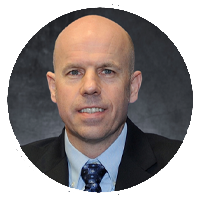
Greg Causey (Lead Product Engineer)
Greg has worked in the spine industry for nearly 20 years. Over that time he has held engineering management positions in a number of spinal companies including: Engineering
Manager, Interbody Group, Theken Spine; VP Engineering, Lanx; VP R&D, Biomet Spine; VP Engineering X-Spine/Xtant.
While at Lanx he was instrumental in the implementation of the product development process as well as in regulatory filings (both US and international) for the company’s portfolio of products covering all aspects of spinal surgery.
Since 2016 he has worked as an independent consultant to the spine/orthopedic industry specializing in new product development, osseointegrative research, and quality/regulatory.
Dr. Causey received his PhD in mechanical engineering from Case Western Reserve University. He has presented at US and International conferences on osseointegrative research and holds a number of patents related to spinal implant systems and technology.

Stewart Peabody (Investor Relations)
Stew Peabody joined the firm in 2019, and has spent the last 13 years working in the investment and financial services industry, with management and individual contributor roles in Investor Relations, Private Banking, Wealth Management, Options Brokerage, Investment Fund Services, Corporate Financial Analysis, and Capital Markets.
While earning his B.A. in Finance (with a minor in Economics) from the University of Denver, Stew worked at the Denver offices of UBS Wealth Management, supporting financial advisors with over $1 billion in assets under management. During summer/winter recess, he clerked for brokers in the eurodollar options pit at the Chicago Board of Trade. Upon graduating, Stew returned to Chicago and joined Northern Trust as a Financial Reporting Analyst. After three years of tenure with the bank, he had been promoted as many times, and was supervising the Hedge Fund Services team. Following that, he moved on to the Transfer Agency, where he managed the mutual fund operations team for two years. After being approached by the business unit CFO, he moved to the corporate finance team, where he spent four years overseeing $1B in company P&L, and advising the corporation’s executive leadership on financial matters.
Kleiner Labs has leveraged Stew’s experience in investor relations and financial services to liaise with current and potential shareholders and assist with financial related matters in general.

Johan Van Havermaet (European Sales and Business Development)
Johan joined the team in 2019 and has been using his experience and network to help the company recruit KOL’s “Key Opinion Leaders,” and business development. Johan has been the director of business development at both DePuy Synthes Companies and Biomet where he was also VP of Spine.
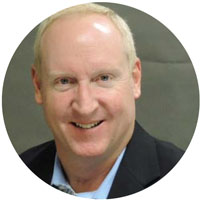
Brad Samson (Vice President of Marketing)
Brad Samson leads the development of Sales and Marketing strategies for commercial, federal, and channel partners, as well as pricing and sales policies for Kleiner Device Labs.
Brad graduated from the Daniels College of Business at the University of Denver with an MBA and BS in Finance. His experience covers many facets of the medical and healthcare industries, including business development, marketing, communication, and public policy for companies such as Axolotl Biologix, Fitbit, Vocera, and Welltok.
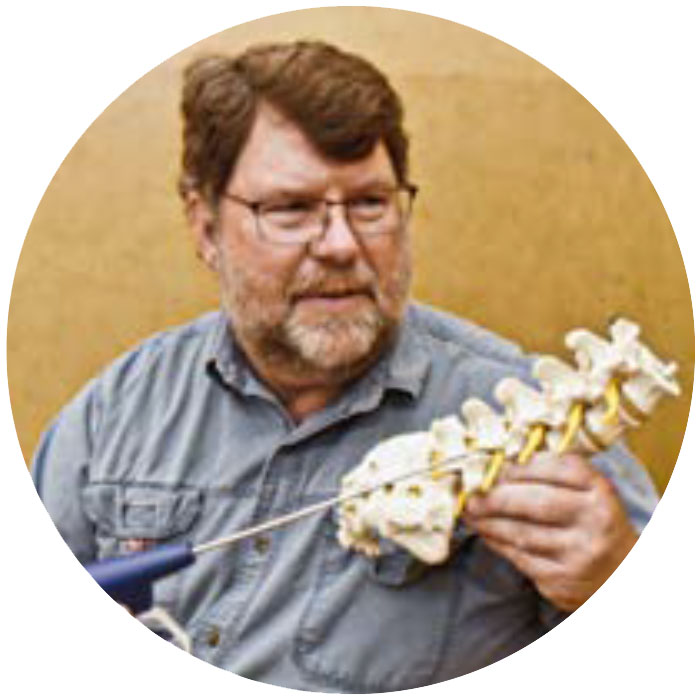
Tim Reeves (FDA Liaison)
Tim Reeves, BS, has been a Clinical and Regulatory Affairs professional in the medical device industry for over 30 years. During the past 23 years, he has worked for six medical device companies in the neurosurgery, orthopedic and spinal surgical industry in either a full time employ or consulting capacity. In each of these companies, he has authored clinical evaluation reports and technical files for successful CE marking of minimally invasive spinal surgical instruments.

Ready to invest in Kleiner Device Labs?
Click the button below to get started…
KDL has existing (non-exclusive) contractual partnerships.
These include, both domestic and international partners. We are currently engaged in discussion for our OEM model with some of the largest volume medical device companies; we are in the early stage of information gathering.
Kleiner Device Labs holds numerous patents protecting its technology and intellectual property.
How many patents does the company control?
What types of patents does it control?
What is in development now?
The patented flow through technology of the KG2 spinal cage combines previously separate surgical steps, and effectively self embeds the implant in graft.
The patented technology of the DragonTail disc debridement tool allows surgeons to efficiently remove more diseased disc tissue in less time, which creates more space for a larger volume of bone graft to be introduced, further increasing the likelihood of successful fusion.
> A FULL LIST OF PATENTS CAN BE FOUND HERE
Kleiner Device Labs also controls one trademark (type: common law word marks)
We will attempt to, but some hospitals will only pay “$X per cage” based on their budget, while other surgery centers only use the best products and pay top dollar.
The length of time that it would take a competitor to launch a product and gain market access is over 2 years.
That said, why reinvent the wheel, it is much less expensive not counting the legal ramifications to do a deal with KDL.
Having a strong intellectual property portfolio also limits others invading our space.
Our product portfolio consists of unique and patented products for spine surgery, with a particular focus on the growing minimally invasive spinal surgical market.
Our Kleiner Device Labs KG System is a complete bone graft delivery system designed to deliver hydrated allograft or autograph to an orthopedic surgical site, which is provided in a sterile, single-use form.
We have received approval under Section 510(k) of the Federal Food, Drug and Cosmetic Act, for our first generation product, KG1 – a single patient use, rectangular, bi-portal bone graft delivery device used for the introduction of bone graft into the prepared disc space during spinal fusion surgeries performed either with an open or a minimally invasive technique.
Our launches of next generation technologies include the KG2, a solid state fusion implant; KG3, expandable fusion implant and Dragontail, an endplate preparation tool. The KG2 is ready for FDA 510K submission in Q2 2021, and the KG3 is in development.
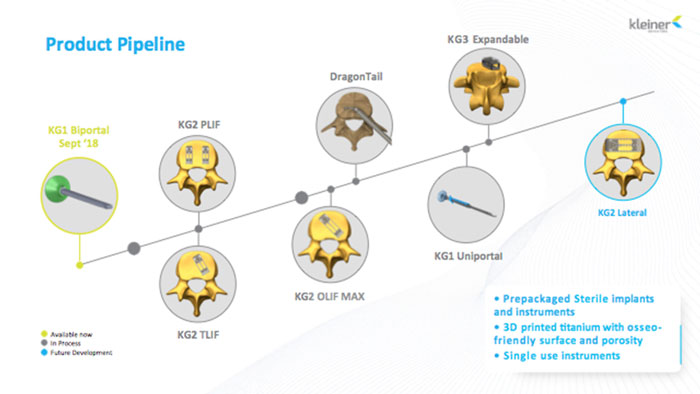
We have a number of customers as a provider of spinal surgical technology:
The number of lumbar fusions performed in the US is estimated to be over 352,000/year.
Furthermore, the growth rate for spinal surgical procedures generally is 5% per year.
There are many competing forecasters of market size and growth. The most recent include estimation of a global spinal fusion device market $6.4B in 2018, expected to reach $13.85B by 2026 (Fortune Business Insights). Of that total market, the new KG2 targets roughly 10% of that total number. Further, the U.S. is the dominant geographic area, representing an estimated 50% of that 2018 global number.
In the safest minimally invasive spinal fusion procedures, 25% to 35% fail to result in successful fusion, leaving patients in need of additional surgery and equal or greater levels of pain than before.
This is not only expensive to the patients and insurance carriers, but prohibitively expensive to society.
The focus of the 6 major spine companies in the US and world market is distribution and sales. They have become reliant upon smaller and startup companies for innovation and to assume the risk of development.
Because the market is so lucrative they compete heavily with each other to purchase or partner with the smaller entities before the other companies do.
KDL has IP and products that allow for significant differentiation and surgeon acceptance.
Clinical research has shown a direct correlation between the amount of bone graft successfully introduced into the disc space, and the rate of successful fusion. All Kleiner Device Labs products enable surgeons to maximize the amount of graft they can introduce to the disc space, and increase the efficiency and ease of the entire procedure.
The KG1 graft delivery device increases the volume and disbursement of bone graft introduced into the interbody disc space, thus increasing overall fusion rates.
The patented flow through technology of the KG2 spinal cage combines previously separate surgical steps, and effectively self embeds the implant in graft.
The patented technology of the DragonTail disc debridement tool allows surgeons to efficiently remove more diseased disc tissue in less time, which creates more space for a larger volume of bone graft to be introduced, further increasing the likelihood of successful fusion.
Case Studies:
Testimonials:

The KG 2 system is the first of its kind: it presents to the market a flow through, leave behind implant that restores disc height, envelops the interbody device and prepared disc space with the maximal volume of bone graft, and is amenable to open theater or minimally invasive approaches to the spine.
Because ambulatory surgery centers (ASCs) are populated by healthier patients and do not have the same risk profile as hospitals for patients with multiple comorbidities, COVID exposure, and those who are uninsured, they are an ideal setting for minimally invasive surgery (MIS).
Because the KDL portfolio is geared to MIS application and since open theater spinal surgery is not compatible with an ASC setting, KDL is particularly suited to filling an unmet need in the surgical community.
The fact that its products can have a successful outcome without expensive chemical adjuvants leads to a perfect match in a growing market which demands safety, improved outcomes and quicker return to function at a lower price. The fact that the system benefits all stakeholders in the marketplace provides a leg up on competitors.
The short answer: Yes.
We are transforming a complex, multi-step procedure into a much simpler, single-step procedure. It takes less time to perform the operation, and as a result, has a whole host of benefits that increase safety for both the patient and surgeon.
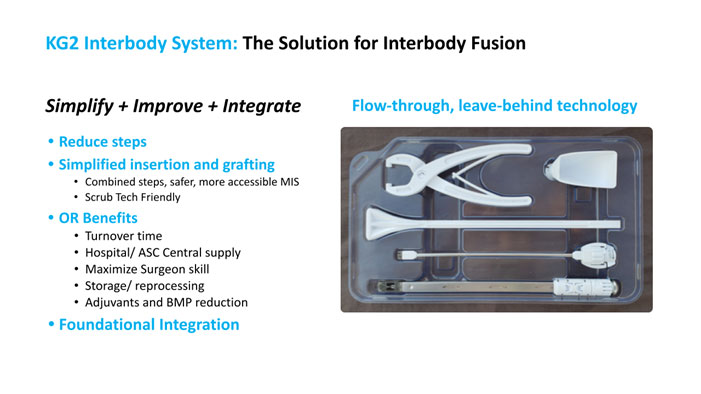
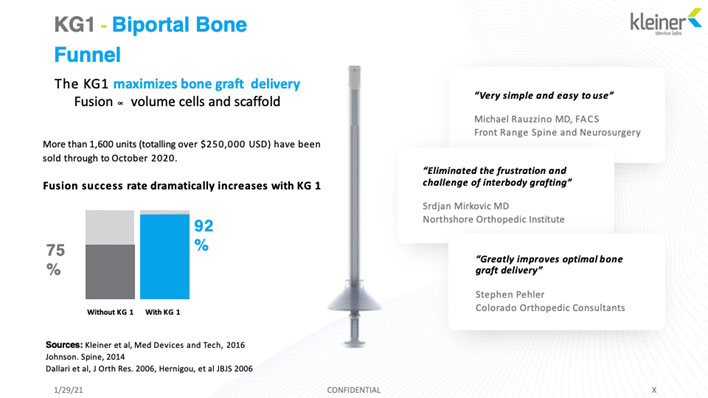
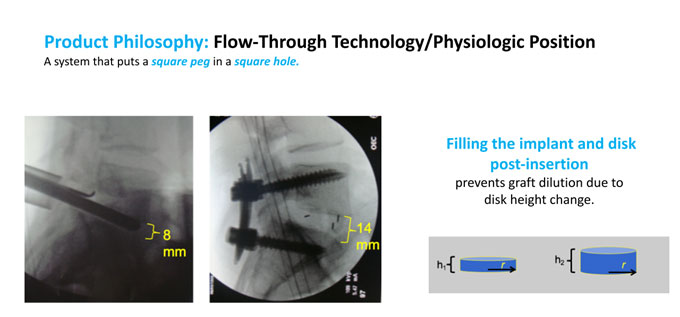
Yes, we have existing customers for KG1 and are developing our plans for launching KG2. KG1 customers include individual surgeons; hospitals; and partners, distributors and independent representatives who are selling to hospital and surgical customers.
A number of these have been acquired by direct selling contact from the company. Some were acquired from initial contact at industry conferences, of which there are a number specifically focused on spine surgery and treatment, as well as neurosurgery and general orthopedics.
All of our current international customers (Hong Kong and Brazil) were introduced at conferences. Hospital customers have predominantly been acquired by surgeon referral and independent rep and distributor connection.
No, we do not.
Absolutely. The number of lumbar fusions performed in the US is estimated to be over 352,000/year and the growth rate for spinal surgical procedures generally is 5% per year.
There are many competing forecasters of market size and growth. The most recent include estimation of a global spinal fusion device market $6.4B in 2018, expected to reach $13.85B by 2026 (Fortune Business Insights). Of that total market, the new KG2 targets roughly 10% of that total number. Further, the U.S. is the dominant geographic area, representing an estimated 50% of that 2018 global number.
Countries being targeted first are European Union member states, and the United Kingdom.
Spinal fusion surgery is very technical, advanced and expensive surgery. As such, it tends to be utilized most in more advanced economies and developed healthcare systems.
The worldwide trend is for growth in minimally invasive strategies because of their decreased expense and the capacity to return patients to work more expeditiously. Generally speaking, advanced economies and health systems in Europe, North America and parts of Asia, including Australia, are obvious targets with demand for appropriate spinal fusion procedures and adequate payment mechanisms.
Plans for international market expansion starts with Europe, with one of our key team members being based in Belgium and well-connected with many surgeons, hospitals and distributors. To that end, we are pursuing a CE mark for the KG2, which is required for sales in all European countries and some Asia-Pacific countries, such as Australia. We have made several large Australian distributor contacts in the past, and believe that achievement of a CE mark will heat these conversations up again, very quickly. We also will leverage previously discussed existing international partnerships that KDL has for Hong Kong, Panama and Brazil.
Back problems which may result in a surgical spinal fusion solution are not limited by geography or culture.
The largest driver of the expanding market opportunity is the improvement in health systems globally. As countries grow from third world into first world health systems, application of target surgical procedures is increasing. These kinds of health system improvements have been happening widely in a number of middle eastern and Asian countries. Some of the most modern hospitals today are to be found in Saudi Arabia, Qatar and Singapore.
The medical device market has unique aspects that affect how customers are approached and acquired. For example, individual surgeons are critical specifiers of choosing your product (or in this case, our product). To get into a hospital, the surgeon is the first step for many products, including ours.
We can call directly on the hospital, but if they don’t have one or more surgeons on staff asking their purchasing department to supply our product, we are unlikely to be successful.
So building surgeon interest is one of our key marketing steps. We do that through raising general awareness with press releases, advertising in appropriate trade journals, attending industry conferences (which surgeons also attend to learn about new techniques and earn continuing medical education credits).
We also utilize sales channels that service surgeons with other products to create awareness and interest in products. Much of the orthopedic surgical market is served by independent sales representatives.
The largest medical device companies such as Medtronic, Stryker, Zimmer-Biomet, NuVasive, Synthes Depuy, Globus and others maintain their own captive sales forces. However, these companies periodically cull their sales teams, often cutting high producers who they judge as costing too much. This has created a pool of independent reps who service a handful of surgeons, and represent other companies’ products in this marketplace.
We have established a network of such representation for our KG1 product. We expect this network to grow significantly with the introduction of the KG2, as the higher average sales price makes the commissions more attractive to the sales representatives. Introduction to different representatives and distributors allows for maintenance growth of this sales channel.
We also have industry partners who help us sell into hospitals and directly to surgeons. For example, we have a relationship with Bioventus, a developer of bone graft materials. They offer our KG1 device as a supplemental product to their surgeons as a way to make the process of introducing graft material into the disc space more effective.
We consider these kinds of industry partners to be an excellent opportunity as we can leverage their reach and sales force. During the COVID epidemic we have used internet sources and sample materials provided by interested companies to develop a library of graft synthetics that can be used with our products. This has created a spectrum of biologic and implant companies interested in our mutual success.
The nature of our business is that scaling is relatively easy. Our supply chain is populated by providers who can easily scale their production to fit our needs.
We have two distinct supply chains: one providing the reusable instruments, and another providing the single use sets. Our business to customer model would necessitate hiring more distributors and reps as we scale, but this would be demand dependent, and relatively nimble in its execution.
The OEM approach would be entirely a B2B model, and the supply chain from a production standpoint is well equipped to handle their needs.
Our first product introduced many surgeons to the company’s concept and ideas, the KG2 device will build on this existing network.
Our first product introduced many surgeons to the company’s concept and ideas, the KG2 device will build on this existing network.
We expect a 1:5 conversion rate based on the enthusiasm from the surgeons who have already previewed the product during its development. As we develop the pipeline of products in our IP portfolio, we anticipate additional cross-selling opportunities.
We make money by having our products purchased by hospitals, surgery centers, distributors, or other medical companies. Our products are used in lumbar spinal fusions.
We currently have one product in the market that has an ASP (average selling price) of $325. It is a disposable, single use item. We estimate that there are about 352,000 lumbar spine fusions annually in the US and growing at 5% a year.
If the client is a surgeon, then the costs involve travel to meet with them, advertising in relevant journals, visits to surgeon offices with anatomic models to demonstrate the procedure.
In addition there are indirect costs associated with recruiting key opinion leaders (respected surgeons and thought leaders in the field), which adds merit and validity to the company and its products. This figure is volume dependent, as many of the aforementioned costs are fixed, but roughly estimated to be $3,000 per surgeon. Many of these costs have been paid out by attracting surgeons to our KG1 product.
We anticipate expanding investments in marketing and sales promotion for the KG2. Commission rates are expected to be 40% on a product that will retail at $3,500. The result will be a considerably higher interest from independent sales representatives. Current plans for the KG2 launch and marketing will include costs for conducting Alpha testing with ten surgeons, to whom we will pay hourly consulting rates (estimated $500) for extra work involved in gathering use and performance data in procedures using our KG2 tool.
If the client is an OEM, the transfer price expected is 40% of the ASP. All other costs for marketing and representation commission are absorbed by the OEM partner.
Rough estimates of annual revenue for each surgeon using our device exclusively would be $250,000.
Once a surgeon has decided to use our product, we assume they are likely to remain using our tool until there is a significant improvement made available to the marketplace. Given the long lead times associated with medical device product development, the customers acquired should remain for a significant period of time.
We have approached the pricing strategy in two ways, both bottom-up on a cost basis, and top-down on a market-will-bear basis.
For the upcoming KG2, which is expected to be the key driver of the company’s immediate future, top-down pricing considerations have been paramount. Prior to the spread of COVID-19, hospital purchasing groups were already incredibly difficult on pricing. Hospital purchasing people are evaluated solely on their ability to reduce or hold the line on spending. No down-stream benefits such as better outcomes, safety or process improvements such as OR throughput factor into their considerations.
As we prepare to launch KG2, we believe hospitals still operating under COVID, or as we come out of the pandemic at some time in 2021, will continue to be every bit as focused on costs as before. Further, given the dire financial circumstances of many hospitals, it’s likely that some facilities will be even more difficult.
At the same time, the Centers for Medicare and Medicaid (CMS) are tasked with setting payment parameters for reimbursements for these programs, and has been moving many procedures to bundled pricing models. In simple terms, paying a single flat rate for a specific type of procedure. If the hospital can provide quality care at less cost, the hospital keeps the difference. This model is being advanced across the U.S. healthcare system, and is more similar to other countries’ government-funded healthcare systems. We anticipate this trend to add to pricing pressure in the market.
Because we are a newcomer and have to fight our way into every hospital, pricing strategy is very critical for KDL. To reduce hospital price objections, KDL has determined to sell the KG2 kit at an equivalent price to standard static-cage-only products.
From the hospital’s perspective, we are offering them not only a better fusion cage product, but a full integrated graft fill system with it, for the same price. A better mousetrap at no additional cost. We believe that hospital purchasing groups will find that to be an acceptable proposition, and will allow surgeons to trial, and ultimately use, the KG2 system. Surgeons should be happy that they will not have to fight with Purchasing in order to try and use the KG2 system.
In addition, some surgeons are trying to adopt new expandable spinal fusion cage options. Expandable devices simplify application of the cage but block the application of bone graft. Surgeon demand and marketing has led to hospitals paying twice the price relative to static cages, for this new, poorly adapted technology. We believe that some hospitals may find our performance-improved, par-priced static cage an attractive answer to surgeons asking for expensive expandable cages. While it is impossible to estimate at this time whether that will become true, we believe it is a worthwhile selling point which will be used in talking with hospital purchasing.
Expectations for 2021 static cage pricing based on hospital pricing documents we have obtained, lead us to expect to be able to sell the KG2 at a realized price of $2,500, and likely falling to $2,000 in 2022. With approximately $1,250 (in 2021, less in 2022) of that going to commission to the selling distributor or rep, we believe that leaves KDL with sufficient margin to build the business.
The two largest costs for KDL that will directly translate to success are product development and building a salesforce.
Larger companies struggle to efficiently develop new products and innovate, while startup companies tend to not have a turnkey salesforce. Instead of reinventing the wheel and investing millions in a sales force, we will be looking to partner with a larger company and leverage their already existing sales team and network.
We are finishing the set buildout and accelerated shelf-life aging for our first implant; we have another $600k to spend in order to complete this final phase.
Our other operating expenses are about $20k per month. This would be the bare minimum in order to get the KG2 launched but we have a full proforma set up for the next 3 years whose execution will depend on how much funding is raised.
Once we are sufficiently funded, we expect the monthly burn rate to be $350k a month. We do not have to develop and sell every product in our pipeline, but we believe each addition creates exponential value to the company.
Our profit margins with higher order quantities are 85% when sold to the end user.
We hope to be cash flow positive by 2023.
How many patents does the company control?
Kleiner Labs will continue developing medical devices unlike anything else on the market, securing those innovative devices through intellectual property patents, clearing those products through regulators (FDA, etc), and delivering them to consumers in the marketplace. This will drive value for our investors.
The primary exit strategy for KDL is to be acquired by one of the largest medical device firms (Medtronic, Stryker, Zimmer-Biomet, Globus, etc).
Based on comparable acquisitions in the spine space over the past several years, it seems reasonable for a return of 3 to 6 times the initial investment, within 2 to 5 Years.
RISK FACTORS
A crowdfunding investment involves risk. You should not invest any funds in this offering unless you can afford to lose your entire investment.
In making an investment decision, investors must rely on their own examination of the issuer and the terms of the offering, including the merits and risks involved. These securities have not been recommended or approved by any federal or state securities commission or regulatory authority. Furthermore, these authorities have not passed upon the accuracy or adequacy of this document.
The U.S. Securities and Exchange Commission does not pass upon the merits of any securities offered or the terms of the offering, nor does it pass upon the accuracy or completeness of any offering document or literature.
These securities are offered under an exemption from registration; however, the U.S. Securities and Exchange Commission has not made an independent determination that these securities are exempt from registration.
1. Discuss the material factors that make an investment in the issuer speculative or risky:
An investment in the Company involves a high degree of risk. You should carefully consider the risks described above and those below before deciding to purchase any securities in this offering. If any of these risks actually occurs, our business, financial condition or results of operations may suffer. As a result, you could lose part or all of your investment.
Risks Related to the Company
We have a limited operating history upon which you can evaluate our performance, and accordingly, our prospects must be considered in light of the risks that any new company encounters.
We were originally formed in Colorado as a limited liability company under the name of Spinal Surgical Strategies, LLC on March 18, 2013. On May 30, 2014, Spinal Surgical Strategies, LLC was re-domesticated from Colorado to Nevada under the same name and subsequently converted to a Nevada corporation, effective as of November 5, 2020. We have limited operations and no operating revenue to date. We are in the development stage, and our future operations are subject to all of the risks inherent in the establishment of a new business enterprise. The likelihood of the success of our company must be considered in light of the problems, expenses, difficulties, complications and delays frequently encountered in connection with the development of an entity in the business of designing, developing and commercializing medical device. There can be no assurance that we will be able to generate revenues, that future revenues will be significant, that any sales will be profitable or that we will have sufficient funds available to complete our marketing and development programs or to market any new products which we may develop. We currently have operating losses, have no substantive source of operating revenue, are unable to self-finance operations, have limited resources, and there can be no assurance that we will be able to develop such revenue sources or that our operations will become profitable, even if we are able to commercialize our products and build brand awareness.
Our Company has a history of incurring losses.
We have a history of incurring losses and we incurred net losses of -$1,570,970 and -$784,549 for the years ended December 31, 2020 and 2019, respectively. The extent of any future losses and whether or not the Company can generate profits in future years remains uncertain. The Company currently does not generate sufficient revenue to cover its operating expenses. We expect our capital outlays and operating expenditures to remain constant for the foreseeable future as we continue to focus on research and development and new product development, patent portfolio maintenance and business development. If we fail to generate sufficient revenue and eventually become profitable, or if we are unable to fund our continuing losses by raising additional financing when required, our shareholders could lose all or part of their investments.
Our products may never achieve significant market acceptance.
We may expend substantial funds and management effort on the development and commercializing of our Kleiner Device Labs KG™ System with no assurance that we will be successful in selling our products. Our ability to enter into distribution arrangements to successfully sell our products will depend significantly on the perception that our products can reduce patient risk and improve medical outcomes, and that our products are superior to existing tests. Our business could also be adversely affected if we expend money without any return. At present, we rely solely on the sales of our KG™1 to generate revenue, and we expect to generate substantially all of our revenue in the foreseeable future from sales of other products in the KG™ system. In order to successfully commercialize our products, we will need to continue to expand our sales and marketing efforts to strengthen existing relationships and develop new relationships with distributors and surgeons, obtain regulatory clearances or approvals for our existing products in additional markets, design, develop, obtain regulatory clearances or approvals and commercialize future potential products and achieve and maintain compliance with all applicable regulatory requirements. If we fail to successfully commercialize our products, we may never receive a return on the substantial investments that we have made in product development, sales and marketing, regulatory compliance, quality assurance, as well as further investments we intend to make, which would have a material adverse effect on our business, financial condition and results of operations.
We will need additional financing to execute our business plan, which we may not be able to secure on acceptable terms, or at all.
We will require additional financing in the near and long term to fully execute our business plan. Our success depends on our ability to raise such additional financing on reasonable terms and on a timely basis. Conditions in the economy and the financial markets may make it more difficult for us to obtain necessary additional capital or financing on acceptable terms, or at all. If we cannot secure sufficient additional financing, we may be forced to forego strategic opportunities or delay, scale back or eliminate further development of our goals and objectives, operations and investments or employ internal cost savings measures.
In order for our Company to compete and grow, we must attract, recruit, retain and develop the necessary personnel who have the needed experience.
Recruiting and retaining highly qualified personnel is critical to our success. These demands may require us to hire additional personnel and will require our existing management personnel to develop additional expertise. We face intense competition for personnel. The failure to attract and retain personnel or to develop such expertise could delay or halt the development and commercialization of our product candidates. If we experience difficulties in hiring and retaining personnel in key positions, we could suffer from delays in product development, loss of customers and sales and diversion of management resources, which could adversely affect operating results. Our consultants and advisors may be employed by third parties and may have commitments under consulting or advisory contracts with third parties that may limit their availability to us.
We may implement new lines of business or offer new products and services within existing lines of business.
There are substantial risks and uncertainties associated with these efforts, particularly in instances where the markets are not fully developed. In developing and marketing new lines of business and/or new products and services, we may invest significant time and resources. Initial timetables for the introduction and development of new lines of business and/or new products or services may not be achieved and price and profitability targets may not prove feasible. We may not be successful in introducing new products and services in response to industry trends or developments in technology, or those new products may not achieve market acceptance. As a result, we could lose business, be forced to price products and services on less advantageous terms to retain or attract clients, or be subject to cost increases. As a result, our business, financial condition or results of operations may be adversely affected.
The Company’s success depends on the experience and skill of the board of directors, its executive officers and key employees.
In particular, the Company is dependent on Jeffrey Kleiner, who is the CEO and Chief Medical Officer, and Harris Kirschner, who is the CFO and Secretary, and Konstantin Caploon, who is the Chief Legal Officer and Treasurer of the Company. The loss of Jeffrey Kleiner, Harris Kirschner and Konstantin Caploon or any member of the board of directors or executive officer could harm the Company’s business, financial condition, cash flow and results of operations.
We are subject to income taxes as well as non-income based taxes, such as payroll, sales, use, value-added, net worth, property and goods and services taxes, in the U.S.
Significant judgment is required in determining our provision for income taxes and other tax liabilities. In the ordinary course of our business, there are many transactions and calculations where the ultimate tax determination is uncertain. Although we believe that our tax estimates are reasonable: (i) there is no assurance that the final determination of tax audits or tax disputes will not be different from what is reflected in our income tax provisions, expense amounts for non-income based taxes and accruals and (ii) any material differences could have an adverse effect on our financial position and results of operations in the period or periods for which determination is made.
Political, economic and regulatory influences are subjecting the healthcare industry to potential fundamental changes that could substantially affect our results of operations.
Government and private sector initiatives to limit the growth of healthcare costs, including price regulation, competitive pricing, coverage and payment policies, comparative effectiveness of therapies, technology assessments and alternative payment models, are continuing in countries where we do business, including the U.S. These changes are causing the marketplace to put increased emphasis on the delivery of more cost-effective treatments. As a U.S. headquartered Company with most of our future sales being expected to come from the U.S., this healthcare reform legislation will materially impact us. Certain provisions of the legislation will not be effective for a number of years and it is unclear what the full impact of the legislation will be. Provisions of this legislation, including Medicare provisions aimed at improving quality and decreasing costs, comparative effectiveness research, an independent payment advisory board, and pilot programs to evaluate alternative payment methodologies, could meaningfully change the way healthcare is developed and delivered, and may adversely affect our business and results of operations. Further, we cannot predict what healthcare programs and regulations will be ultimately implemented at the federal or state level, or the effect of any future legislation or regulation in the U.S. or internationally. However, any changes that lower reimbursements for our products, reduce medical procedure volumes or increase cost containment pressures on us or other participants in the healthcare industry could adversely affect our business and results of operations.
We are subject to numerous governmental regulations which can increase our costs of developing our KG™1 Technology and products based on this technology.
Our products may be subject to rigorous regulation by the FDA, Health Care and numerous international, supranational, federal, and state authorities. The process of obtaining regulatory approvals to market a medical device can be costly and time-consuming, and approvals might not be granted for future products, or additional indications or uses of existing products, on a timely basis, if at all. Delays in the receipt of, or failure to obtain approvals for, our products, or new indications and uses, could result in delayed realization of product revenues, reduction in revenues, and in substantial additional costs. In addition, no assurance can be given that we will remain in compliance with applicable FDA, Health Care and other regulatory requirements once approval or marketing authorization has been obtained for a product. These requirements include, among other things, regulations regarding manufacturing practices, product labeling, and advertising and post-marketing reporting, including adverse event reports and field alerts due to manufacturing quality concerns.
We lack published long-term data supporting superior clinical outcomes enabled by our products or technologies, which could negatively impact our sales, and we may not generate sufficient revenue to achieve and sustain profitability.
Our products are regulated as medical devices by the U.S. Food and Drug Administration (the “FDA”) and substantially all have received premarket clearance under Section 510(k) of the U.S. Federal Drug and Cosmetic Act (the “FDCA”). In the 510(k) clearance process, before a device may be marketed, the FDA must determine that a proposed device is “substantially equivalent” to a legally-marketed “predicate” device, which includes a device that has been previously cleared through the 510(k) process, a device that was legally marketed prior to May 28, 1976 (pre-amendments device), a device that was originally on the U.S. market pursuant to an approved premarket approval (the “PMA”) application and later down-classified, or a 510(k)-exempt device. This process is typically shorter and generally requires the submission of less supporting documentation than the FDA’s PMA process and does not always require clinical studies.
Given the foregoing regulatory regime applicable to us, we lack the breadth of published long-term clinical data supporting the safety and efficacy of our products and technologies. For these reasons, surgeons may be slow to, or may not, adopt our products because we lack published long-term data supporting superior clinical outcomes enabled by our products or technologies as compared to our competitors. Additionally, future patient studies or clinical experience may not support our belief that treatment with our products improves patient outcomes. Given this, our sales could be negatively impacted and we may not generate sufficient revenue to achieve and sustain profitability.
Obtaining and maintaining our patent protection depends on compliance with various procedural, document submission, fee payment and other requirements imposed by governmental patent agencies, and KDL’s patent protection could be reduced or eliminated for non-compliance with these requirements.
Periodic maintenance and annuity fees on issued United States patents and most foreign patent applications and patents must be paid to the U.S. Patent and Trademark Office, or USPTO, and foreign patent agencies, respectively, in order to maintain such patents and patent applications. The USPTO and various foreign governmental patent agencies require compliance with a number of procedural, documentary, fee payment and other similar provisions during the patent application, examination and issuance processes. While an inadvertent lapse can, in some cases, be cured by payment of a late fee or by other means in accordance with the applicable rules, there are situations in which noncompliance can result in abandonment or lapse of the patent or patent application, resulting in partial or complete loss of patent rights in the relevant jurisdiction. Non-compliance events that could result in abandonment or lapse of a patent or patent application include failure to respond to official actions within prescribed time limits, non-payment of fees and failure to properly legalize and submit formal documents. If we fail to maintain the patents and patent applications covering our product or product candidates, our competitors might be able to enter the market with similar or identical products or technology, which would have a material adverse effect on our business, financial condition and results of operations.
We operate in a highly competitive market. We face competition from large, well established medical device manufacturers and pharmaceutical companies in the market for spine surgery. Many of these companies are very well accepted by health practitioners and have significant resources, and we may not be able to compete effectively.
Our KG™1 product faces unique groupings of competitive technologies depending on the application. Not all competitive technologies are relevant in each application and market. The market for minimally invasive surgery medical device is intensely competitive, subject to rapid change and significantly affected by new product introductions. Large pharmaceutical and medical device companies, such as Medtronic, DePuy Synthes (Johnson &Johnson Medical Devices), Stryker, Globus, and Nuvasive are in our competitive space. These competitors’ products are well accepted by health practitioners and patients, and present the competitive challenge for market entry and penetration.
Many of our competitors may have significantly greater financial resources and expertise in research and development, manufacturing, preclinical testing, conducting clinical trials, obtaining regulatory approvals and marketing approved products than we do. Mergers and acquisitions in the pharmaceutical, biotechnology and diagnostic industries may result in even more resources being concentrated among a smaller number of our competitors. These competitors also compete with us in recruiting and retaining qualified scientific and management personnel and establishing clinical trial sites and patient registration for clinical trials, as well as in acquiring technologies complementary to, or necessary for, our programs. Smaller or early-stage companies may also prove to be significant competitors, particularly through collaborative arrangements with large and established companies.
The medical device industry is characterized by patent litigation and we could become subject to litigation which could be costly, result in the diversion of management’s time and efforts and require us to pay damages.
The medical device industry is characterized by patent litigation and we could become subject to litigation which could be costly, result in the diversion of management’s time and efforts and require us to pay damages.
The medical device industry is characterized by a large number of patents, frequent litigation and administrative proceedings over patent and other intellectual property rights. Whether a product infringes a patent involves complex legal and factual issues, the determination of which is often uncertain. Our competitors may assert that our product, its components or the methods we employ in the use of our system are covered by U.S. or foreign patents held by them. In addition, they may claim that their patents have priority over ours because their patents were filed or issued first. Because patent applications can take many years to issue, there may be applications now pending of which we are unaware, which may later result in issued patents that our product may infringe. There could also be existing patents that one or more components of our system may inadvertently be infringing, of which we are unaware. As the number of participants in the market for spine disorder treatments grows, the possibility of patent infringement claims against us increases.
Any litigation or claims against us may cause us to incur substantial costs, could place a significant strain on our financial resources, divert the attention of management from our core business and harm our reputation. If the relevant patents were upheld as valid and enforceable and we were found to infringe, we could be required to pay substantial damages and/or royalties and could be prevented from selling our products unless we could obtain a license or were able to redesign our system to avoid infringement.
If we are unable to persuade hospitals, ambulatory surgery centers and other healthcare facilities to approve the use of our products, our sales may decrease.
In order for surgeons to use our products at hospitals, ambulatory surgery centers and other healthcare facilities, we are often required to obtain approval from those hospitals, ambulatory surgery centers and healthcare facilities. Typically, hospitals, ambulatory surgery centers and healthcare facilities review the comparative effectiveness and cost of products used in the facility. The makeup and evaluation processes for healthcare facilities vary considerably, and it can be a lengthy, costly and time-consuming effort to obtain approval by the relevant healthcare facilities. Additionally, hospitals, ambulatory surgery centers and other healthcare facilities, which manage purchasing for multiple facilities, may also require us to enter into a purchase agreement and satisfy numerous elements of their administrative procurement process, which can also be a lengthy, costly, and time-consuming effort. If we do not obtain access to hospitals, ambulatory surgery centers and other healthcare facilities in a timely manner, or at all, via their approvals or purchase contract processes, or otherwise, or if we are unable to obtain approvals or secure contracts in a timely manner, or at all, our operating costs will increase, our sales may decrease and our operating results may be adversely affected. Furthermore, we may expend significant efforts on these costly and time-consuming processes but may not be able to obtain necessary approvals or secure a purchase contract from such hospitals, ambulatory surgery centers and other healthcare facilities.
We are dependent on our collaborative agreements for the development of products and business development, which exposes us to the risk of reliance on the viability of third parties.
In conducting our research and development activities, we will in the future rely on collaborative agreements with third parties such as manufacturers, contract research organizations, commercial partners, universities, governmental agencies and not-for-profit organizations for both strategic and financial resources. The loss of, or failure to perform by us or our partners under, any applicable agreements or arrangements, or our failure to secure additional agreements for other products in development, would substantially disrupt or delay our research and development and commercialization activities. Any such loss would likely increase our expenses and materially harm our business, financial condition and results of operation.
Reliance on third-party relationships and outsourcing arrangements could adversely affect our business.
We utilize third parties, including suppliers, alliances with other pharmaceutical and biotechnology companies, and third-party service providers, for selected aspects of product development, the manufacture and commercialization of certain products, support for information technology systems, and certain financial transactional processes. Outsourcing these functions involves the risk that the third parties may not perform to our standards or legal requirements, may not produce reliable results, may not perform in a timely manner, may not maintain the confidentiality of our proprietary information, or may fail to perform at all. Failure of these third parties to meet their contractual, regulatory, confidentiality, or other obligations to us could have a material adverse effect on our business.
If the coverage and reimbursements for procedures using our products are inadequate or if payments are denied altogether, adoption and use of our products and the prices paid for our products may decline, which could have a material adverse effect on our business, financial condition or results of operations.
Adequate coverage and reimbursement from third-party payors, including government programs such as Medicare and Medicaid, private insurance plans and managed care programs, for procedures using our products is central to the acceptance and adoption of our existing and future products and technologies. Hospitals, healthcare facilities, surgeons and other healthcare providers that purchase and use our products generally rely on third-party payors to pay for all or part of the costs and fees associated with the procedures using our products. If third-party payors reduce their current levels of payment, if our costs of production increase faster than increases in reimbursement levels or if third-party payors deny reimbursement for our products, our products and technologies may not be adopted or accepted by the hospitals, healthcare facilities, surgeons or other healthcare providers and the prices paid for our products may decline, which could have a material adverse effect on our business, financial condition or results of operations.
When procedures using our products are performed, both the surgeon or other healthcare provider and the hospital or healthcare facility submit claims for reimbursement to the third-party payor. Generally, the hospital or healthcare facility obtains a lump sum payment, or facility fee, for spine surgery procedures. Our products are purchased by the hospital or healthcare facility, along with other supplies used in the procedure. The hospital or healthcare facility must also pay for its own fixed costs of operation, including certain operating room personnel involved in the procedure. If the costs associated with our products, the supplies and other fixed costs exceed the facility fee reimbursement, the managers of hospitals and healthcare facilities may discourage or restrict surgeons and other healthcare providers from performing procedures using our products or technologies in their facilities or use certain of our products or technologies. While we believe that the facility fee reimbursement is generally adequate for the facilities to offer procedures using our products, there can be no guarantee that the facility fee reimbursement will not decline in the future or be denied altogether. The number of procedures using our products performed and the prices paid for our products may decline in the future if payments to facilities for spine surgery procedures decline or are denied altogether.
Additionally, market acceptance of our products and technologies in foreign markets may depend, in part, upon the availability of coverage and reimbursement within prevailing healthcare payment systems. Reimbursement and healthcare payment systems in international markets vary significantly by country and include both government-sponsored healthcare and private insurance. We may not obtain additional international coverage and reimbursement approvals in a timely manner, if at all. Our failure to receive such approvals would negatively impact market acceptance of our products in the international markets in which those approvals are sought.
The forecasts of market growth included in our business plan and investor presentations may prove to be inaccurate, and even if the markets in which we compete achieve the forecasted growth, we cannot assure you our business will grow at similar rates, if at all.
Growth forecasts are subject to significant uncertainty and are based on assumptions and estimates that may not prove to be accurate. The forecasts in our business plan and investor presentations may prove to be inaccurate. Even if these markets experience the forecasted growth described in our business plan, we may not grow our business at similar rates, or at all. Our growth is subject to many factors, including our success in implementing our business strategy, which is subject to many risks and uncertainties. Accordingly, the forecasts of market growth included in our business plan should not be taken as indicative of our future growth.
If the quality of our products and technologies does not meet the expectations of surgeons or patients, then our brand and reputation could suffer and our business could be adversely impacted.
In the course of conducting our business, we must adequately address quality issues that may arise with our products and technologies, as well as defects in third-party components or materials used in our products. Furthermore, a malfunction in one or more of our products may not be detected for an extended period of time, which may result in delay or failure to remedy the condition for which the product was prescribed. Although we have established internal procedures to minimize risks that may arise from quality issues, we may be unable to eliminate or mitigate occurrences of these issues and associated liabilities. If the quality of our products and technologies does not meet the expectations of surgeons or patients, then our brand and reputation could suffer and our business could be adversely impacted.
Changes in the manufacturing methods and configurations of our products in development may result in additional costs or delay, which could have a material adverse effect on our business, financial condition and results of operations.
As we modify existing products and develop new products through pre-clinical testing and clinical trials towards clearance or approval and commercialization, we may alter manufacturing methods and configurations of the products along the way in an effort to optimize processes and results. Any changes we make carry the risk that they will not achieve the intended objectives and instead could result in unforeseen adverse events or have undesirable effects that impact the results of any clinical trials conducted with the altered products. Such changes may also require additional testing, regulatory notification or regulatory approval, which could delay completion of pre-clinical testing or clinical trials, increase costs, delay approval of our future products and jeopardize our ability to commence or maintain sales and generate revenue as expected, all of which could have a material adverse effect on our business, financial condition and results of operations.
We may pursue additional opportunities to acquire complementary businesses, which could dilute our shareholders’ ownership interests, incur expenditure and have uncertain returns.
We may seek to expand through future acquisitions of either companies or properties, however, there can be no assurance that we will locate attractive acquisition candidates, or that we will be able to acquire such candidates on economically acceptable terms, if at all, or that we will not be restricted from completing acquisitions pursuant to contractual arrangements. Future acquisitions may require us to expend significant amounts of cash, resulting in our inability to use these funds for other business or may involve significant issuances of equity. Future acquisitions may also require substantial management time commitments, and the negotiation of potential acquisitions and the integration of acquired operations could disrupt our business by diverting management and employees’ attention away from day-to-day operations. The difficulties of integration may be increased by the necessity of coordinating geographically diverse organizations, integrating personnel with disparate backgrounds and combining different corporate cultures.
Any future acquisition involves potential risks, including, among other things:
At times, future acquisition candidates may have liabilities or adverse operating issues that we may fail to discover through due diligence prior to the acquisition. If we consummate any future acquisitions with unanticipated liabilities or that fails to meet expectations, our business, results of operations, cash flows or financial condition may be materially adversely affected. The potential impairment or complete write-off of goodwill and other intangible assets related to any such acquisition may reduce our overall earnings and could negatively affect our balance sheet.
Our business, results of operations and financial condition may be adversely affected by public health epidemics, including the coronavirus or COVID-19.
Our business, operations and financial condition could be materially and adversely affected by the outbreak of epidemics or pandemics or other health crises, including the recent outbreak of COVID-19. In December 2019, a novel strain of coronavirus, SARS-CoV-2, causing a disease referred to as COVID-19, was reported to have surfaced in Wuhan, China. On January 30, 2020, the World Health Organization declared the outbreak a global health emergency, on March 12, 2020, the World Health Organization declared the outbreak a pandemic and on March 13, 2020 the U.S. declared that the COVID-19 outbreak in the United States constitutes a national emergency. The outbreak has caused companies and various international jurisdictions to impose travel, gathering and other public health restrictions. While these effects are expected to be temporary, the duration of the various disruptions to businesses locally and internationally and the related financial impact cannot be reasonably estimated at this time. Similarly, we cannot estimate whether or to what extent this outbreak and the potential financial impact may extend to countries outside of those currently impacted. At this point, the extent to which COVID-19 will impact our business is uncertain and these factors are beyond our control; however, it is possible that COVID-19 may have a material adverse effect on our business, results of operations and financial condition.
Risks Related to the Company’s Securities and this Offering
Affiliates of our company, including officers, directors and existing stockholder of our company, may invest in this offering and their funds will be counted toward our achieving the minimum amount.
There is no restriction on our affiliates, including our officers, directors and existing stockholders, investing in the offering. As a result, it is possible that if we have raised some funds, but not reached the minimum amount, affiliates can contribute the balance so that there will be a closing. The minimum amount is typically intended to be a protection for investors and gives investors confidence that other investors, along with them, are sufficiently interested in the offering and our company and its prospects to make an investment of at least the minimum amount. By permitting affiliates to invest in the offering and make up any shortfall between what non-affiliate investors have invested and the minimum amount, this protection is largely eliminated. Investors should be aware that no funds other than their own and those of affiliates investing along with them, may be invested in this offering.
We intend to use some of the proceeds from the offering for unspecified working capital.
This means that we have ultimate discretion to use this portion of the proceeds as we see fit and have chosen not to set forth any specific uses for you to evaluate. The net proceeds from this offering will be used for the purposes, which our management deems to be in our best interests in order to address changed circumstances or opportunities. As a result of the foregoing, our success will be substantially dependent upon our discretion and judgment with respect to application and allocation of the net proceeds of this offering. We may choose to use the proceeds in a manner that you do not agree with and you will have no recourse. A use of proceeds that does not further our business and goals could harm our company and its operations and ultimately cause you to lose all or a portion of your investment.
We are not subject to Sarbanes-Oxley regulations and lack the financial controls and safeguards required of public companies.
We do not have the internal infrastructure necessary, and are not required, to complete an attestation about our financial controls that would be required under Section 404 of the Sarbanes-Oxley Act of 2002. There can be no assurance that there are no significant deficiencies or material weaknesses in the quality of our financial controls. We expect to incur additional expenses and diversion of management’s time if and when it becomes necessary to perform the system and process evaluation, testing and remediation required in order to comply with the management certification and auditor attestation requirements.
The securities being sold in this offering will not be freely tradable until one year from the initial purchase date. Although our securities may be tradable under federal securities law, state securities regulations may apply, and each investor should consult with his or her attorney.
You should be aware of the long-term nature of this investment. There is not now and likely will not be a public market for our securities. Because our securities have not been registered under the Securities Act or under the securities laws of any state or non-United States jurisdiction, our securities have transfer restrictions and cannot be resold in the United States except pursuant to Rule 501 of Regulation CF. It is not currently contemplated that registration under the Securities Act or other securities laws will be effected. Limitations on the transfer of the securities may also adversely affect the price that you might be able to obtain for our securities in a private sale. Investors should be aware of the long-term nature of their investment in the Company. Each investor in this offering will be required to represent that it is purchasing the securities for its own account, for investment purposes and not with a view to resale or distribution thereof.
Neither the offering nor the securities have been registered under federal or state securities laws, leading to an absence of certain regulation applicable to us.
No governmental agency has reviewed or passed upon this offering, our company or any Securities of our company. We also have relied on exemptions from securities registration requirements under applicable state securities laws. Investors, therefore, will not receive any of the benefits that such registration would otherwise provide. Prospective investors must therefore assess the adequacy of disclosure and the fairness of the terms of this offering on their own or in conjunction with their personal advisors.
No Guarantee of Return on Investment
There is no assurance that an investor will realize a return on its investment or that it will not lose its entire investment. For this reason, each investor should read the Form C and all Exhibits carefully and should consult with its own attorney and business advisor prior to making any investment decision.
We have the right to extend the offering deadline.
We may extend the offering deadline beyond what is currently stated herein. This means that your investment may continue to be held in escrow while we attempt to raise the minimum amount even after the offering deadline stated in this offering statement is reached. Your investment will not be accruing interest during this time and will simply be held until such time as the new offering deadline is reached without our company receiving the minimum amount, at which time committed funds will become immediately available for withdrawal from the investor’s brokerage account maintained with the Intermediary without interest or deduction, or until we receive the minimum amount, at which time it will be released to us to be used as set forth herein. Upon or shortly after release of such funds to us, the securities will be issued and distributed to you.
Your ownership of the shares will be subject to dilution.
If we conduct subsequent offerings of securities, issue shares pursuant to a compensation or distribution reinvestment plan or otherwise issues additional shares, investors who purchase securities in this offering who do not participate in those other stock issuances will experience dilution in their percentage ownership of our company’s outstanding shares. Furthermore, shareholders may experience a dilution in the value of their underlying shares depending on the terms and pricing of any future share issuances (including the underlying shares being sold in this offering) and the value of the our assets at the time of issuance.
Management has discretion over proceeds of this offering.
We expect to use the net proceeds of this offering, over time, for general marketing and advertising, leasing costs, debt repayment and general working capital. However, we have no current specific plans for the net proceeds of this offering other than as outlined in the use of proceeds section of this offering statement. As a result, our management will have the discretion to allocate the net proceeds to uses that investors may not deem desirable. There can be no assurance that the net proceeds can or will be invested to yield a significant return.
There can be no assurance that we will ever provide liquidity to investors through either a sale of our company or a registration of the securities.
There can be no assurance that any form of merger, combination, or sale of our company will take place, or that any merger, combination, or sale would provide liquidity for investors. Furthermore, we may be unable to register the securities for resale by investors for legal, commercial, regulatory, market-related or other reasons. In the event that we are unable to effect a registration, investors could be unable to sell their securities unless an exemption from registration is available.
The offering price in this offering may not represent the value of our securities.
The price of the securities being sold in this offering has been determined based on a number of factors and does not necessarily bear any relationship to our book value, assets, operating results or any other established criteria of value. Prices for our securities may not be indicative of the fair market value of our securities now or in the future.

Invest in Kleiner Device Labs
Click the button below to get started…
communication forum
The next 8 slides will allow us to process your investment. Note that these next steps are a legal requirement – Thank you for your patience and financial support of this investment opportunity. Jordan Gillissie – CEO
Before we execute the investment, it’s important for us to make sure you’re comfortable and knowledgeable in early stage investing. We want to make sure that you:
We are currently upgrading our system. If you click submit and the process does not continue in a few seconds, please refresh this page manually, and click Invest Now again and you should be moved on to the next step.
Please wait a few minutes while we create your account. An email will be sent to you shortly to confirm your admittance. Should the email be delivered to your spam or promotions folder, we recommend you move it to your inbox and mark Equifund as a safe sender.
If you have not received the email in 5 minutes, please click here to have it resent.
Questions? Our customer service team is always here to help – 1-866-338-3004

If you’re clearly stating that you’re planning to be acquired & not go public as a traded company, how does that leave the investors with a return?
Mr. Segal,
Thank you for your question. With regards to an acquisition exit strategy, “all-cash”, & “all-stock” deals, are often used (deals that involve both cash and stock are common too). In those scenarios, the acquired company’s shareholders receive either cash or shares in the company that purchases them (or a combination of both).
Kind Regards,
What do you expect the spinal fusion rate to be with the KG 2 product?
Are your plans to wait for an exit until the KG 3 system is ready to be used in the marketplace?
Thank you in advance.
Mr. Mitchell,
Thank you for your questions.
1) While fusion rates vary from surgeon to surgeon due to differences in technique as well as the specifics of each procedure, we believe surgeons can anticipate a 10% fusion rate improvement relative to their historic results. We are confident the KG2 makes a good surgeon better, enabling their work to be easier, less time consuming, and safer for the patient.
2) With respect to the exit strategy, demonstrating proof of concept through successful product launches and upward trending revenue growth are the primary goals of the business. Developing the rest of the product pipeline is in support of those two goals but subordinate as well. Potential acquirers are looking for promising and innovative products that have already been “de-risked” and demonstrate traction in the marketplace. If a suitable exit opportunity presents itself before the KG 3 is commercially available, it would be given consideration.
Kind Regards,
I’ve already invested the minimum (I put in $500, not sure the exact amount but put in about $471 or the minimum w/my $500). I want to keep investing but we live week to week & can only afford $100-150 a month. Since I already met the minimum investment, can I start investing what we can afford? There is no such thing as a savings acct w/in our family, but this is one of the first companies I’ve really gotten excited about. If the answer is no, can u possibly make an amendment that allows investors who have already invested the minimum start investing monies at their discretion? PLEASE, PLEASE, PLEASE push this up the chain of command & help us little families? Sincerely Franklin L Henry Jr. email is Fhenryjr@ gmail .com
Mr. Henry,
Thank you for your support, as well as your question. Specifics on portal policy and Reg CF regulations would need to be addressed by Equifund. If you would like to make changes to your investment, please contact [email protected].
Kind Regards,
The KG1 is a surgical delivery tool. The KG2 has the added feature of an implant.
Is the KG2 approval process more strident and longer since it has a greater impact on the body?
Since you are creating an interbody cage rather than using an existing one on the market, does it face approval as well?
When do you foresee the KG2 being used in the field?
Thank you in advance.
Mr. Mitchell,
Excellent questions!
1) Because the KG 2 is implanted, the testing requirements are indeed much more rigorous and thorough. Implanted devices carry serious failure implications, and as a result, they must be meticulously tested before live use. As a patient’s well being is on the line with each use, safety and performance are paramount. Kleiner Device Labs has rigorously tested KG 2 over the last 2 years in preparation of submitting to the FDA for 510(k) clearance.
2) The KG 2 was submitted to the FDA for 510(k) clearance this past May. Assuming all goes as planned with the 510(k) clearance timeline, we are anticipating field use in September 2021 by our alpha surgeons.
Kind Regards,
Hi – Can you please tell me the company’s short-term strategy to become profitable? Revenue is still very low below $50,000.
Mr. Hooks,
Thank you for your questions. Please see the respective answers to questions from July 2nd and July 4th below.
1) Kleiner Device Labs’ is focused on creating lasting value for our investors & stakeholders. The long term strategy at Kleiner Device Labs is to develop and deliver innovative, patented devices which allow spine surgery to be less painful, less expensive, and more clinically effective. The short term strategy tactically supports the long term strategy. All revenues to date have been generated from KG1 which will be addressed with more detail in the second response section. Our short term strategy for Q3 2021 involves receiving FDA clearance for the KG2, and executing a successful “alpha” launch with the 10 surgeons already committed to that effort. We forecast the “alpha” launch to generate $2.1M in annualized revenue using an assumption of six procedures performed each month per surgeon, at an average sales price of $3000 per unit. Coupled with a wider commercial launch, and the commercial availability of the DragonTail, we expect to be profitable while continuing to develop the product pipeline in 2022.
2) The KG1 is Kleiner Device Labs’ first commercially available product. It represented a capital efficient means to establish KDL brand awareness, while also demonstrating proof of concept and the company’s ability to execute on IP development from concept to commercialization. Considering this, KG1 accomplished all that it was intended to. Additionally, with an average sales price of $220, KG1 has generated approximately $285K in revenue from the sale of 1300 units since launch. Due to the low ASP of $220 without a CPT code for insurance reimbursements, KG1 is not ideally suited as a stand alone product in a 3rd party distribution model. In contrast, the KG2 & Dragontail are well suited to the 3rd party distribution model.
Kind Regards,
Also, since KG1 has been commercial since 2018 and proven to be successful, why hasn’t this caused a significant increase to the company’s top line and bottom line?
Mr. Hooks,
Please see the response to this in section 2 of your July 2nd post.
Kind Regards,
Hi,
Can you elaborate on your statement below? I’d like to get more understanding.
Due to the low ASP of $220 without a CPT code for insurance reimbursements, KG1 is not ideally suited as a stand alone product in a 3rd party distribution model. In contrast, the KG2 & Dragontail are well suited to the 3rd party distribution model.
Mr. Hooks,
Current Procedural Terminology (CPT codes) are numbers assigned to every task and service a medical practitioner may provide to a patient including medical, surgical, and diagnostic services. They are used by insurers to determine the amount of reimbursement that a practitioner will receive by an insurer for that service.
Products like the KG2 already have existing CPT codes. As a result, the health insurance filing process is streamlined, and reimbursement rates are higher for the provider (hospital/surgery center).
With respects to the distribution model & average sales price (ASP), third party distributors rely on percentage based commission for their revenue, so their incentive is to spend their time and effort on selling products with higher ASP (like the KG2 and DragonTail).
Kind Regards,
2) “The KG 2 was submitted to the FDA for 510(k) clearance this past May. Assuming all goes as planned with the 510(k) clearance timeline, we are anticipating field use in September 2021 by our alpha surgeons.” Did you make your field use date of 9/21 for the KG 2? What is the current status of the Kleiner KG2 submission to the FDA??
Mr. Erickson,
Thank you for your questions.
1) Due to the global supply chain issues which have been impacting industries and manufacturing worldwide, the KG2 field use date will be delayed. Purchase orders have already been placed with each manufacturer in the KG2 supply chain, though their fulfilment timelines are now longer than they had originally estimated. While the Kleiner Labs engineering team met all the internal milestones, the macro supply chain issues are a rate limiting factor.
2) The KG2 FDA submission has proceeded as anticipated.
Kind Regards,
I am located in Canada can I still invest?
Mr. Kinney,
Thank you for your interest in Kleiner Device Labs and the current Reg CF offering. Unfortunately, we are not accepting foreign investment at this time.
Kind Regards,
How are investments allocated
In Shares or other holdings?
Alkis Alexiadis,
Thank you for your question.
The Reg CF offering is of equity shares in the corporation in exchange for cash invested.
Kind Regards,
how can i invest in a company when i don’t see One Woman shown on their board, just a bunch of old white men. And they want my money? Forget it until you figure out how to integrate woman into your company board. Please pass this on to them and make them aware it speaks loudly.
thank you.
CoCo,
Thank you for your comments.
Your observations regarding the composition of the board are valid, however, the board is representative of the founding team and early angel investors. It is not a reflection of intentional exclusion.
Kleiner Device Labs continually seeks involvement from spine industry professionals of all demographics, and DOES NOT discriminate based on gender, race, age, or sexual orientation.
Women have been directly involved with the company’s engineering, compliance, and clinical analysis efforts.
Sincerely,
how can i invest in a company when i don’t see One Woman shown on their board?
thank you.
CoCo,
Please see the response to your first comment above.
Kind Regards,
how can i invest in a company when i only see men shown on their board?
thank you.
CoCo,
Please see the response to your first comment above.
Kind Regards,
Evening,
If the company is bought out by one of the larger players in the medical device field and you would expect 3-5 times buyout on the current valuation of the company in 2-5 years. How did you come to a valuation of 28.5 million for the company? My second question is what are the buyout rates for:
1) Dr Kleiner 2 Million
2) Friends and Family
3) Angel Group
4) Equifund Offering
Thank you
Eugene Kerry
Eugene,
Thank you for your questions and apologies for the delayed reply. Please see responses to your inquiries below.
1) The valuation of $28.5m is supported by comparable capital markets activity and exits that have occurred in the spinal med device industry over the past 8 years. The acquisitions of Vertiflex by Boston Scientific and Ellipse by Nuvasive are especially relevant examples. The revenue to valuation multiples at the time of those two comparable acquisitions also validate the targeted returns for equifund investors if Kleiner Device Labs generates the expected revenue from the wide launch of KG2.
2) Any potential exit opportunities would be evaluated based on the best possible outcome for all shareholders. As the company continues to grow and successfully hit additional milestones, the acceptable terms and enterprise valuation for an attractive exit opportunity increase proportionally.
Kind Regards,
I invested in this offering but I am disappointed that there is a charge of $24 in addition to the funding amount. I did not see any other crowd funding company charging such a high fee.
Lakshmana,
Thank you for your support as well as your valid comments and observations on transaction fees. Unfortunately, Kleiner Device Labs does not set the policy with regards to transaction fees on the Equifund portal. Specifics on portal policy and Reg CF regulations would need to be addressed by Equifund. If you would like to make changes to your investment, please contact [email protected].
Kind Regards,
I have questions
Pavlos,
Please provide additional detail regarding your questions.
Kind Regards,
Good afternoon, great company and the product is amazing. I want to clarify the investor multiple situation. For example if the company were to be bought at 500 million and an investor put 10 grand during the 30 million valuation then wouldn’t that person make a 16x multiple return? 500 divided by 30 million valuation and you get 16.66. So how are you getting a 3-6 multiple on the money? Are you getting a 3-6 multiple because of dilution? How is the math done? Was my math incorrect? Would love an explanation. Thank you
Aurus,
Thank you for your comments and questions. Regarding the guidance on the range of possible return multiples, you have correctly surmised that it is indeed inclusive of an adjustment for potential future dilution. Development of the entire pipeline of products and associated IP would most likely require additional capital investment outside of the retained earnings from KG1 & KG2 revenues. Our model includes dilution from estimated follow on financing rounds. Wide launch and full commercialization of the product pipeline would most likely be necessary to grow revenues to the levels that would support the higher end exit valuations.
Kind Regards,
Good afternoon,
(1) What is the current state of field use of the KG2 please?
(2) Last investor question I see answered above was 9/24/2021…..4 unanswered questions above?
Donald,
Thank you for your question.
1) Global supply chain issues have impacted fulfillment timelines for physical goods and products in industries all across the board. The Kleiner Labs team and our external sub-suppliers/manufacturing partners have made a concerted effort to minimize logistical delays associated with this macro economic context. Accounting for this context, delivery of fully assembled, sterilized, and packaged KG2 single use trays are expected next month. Subsequent field use of the KG2 is expected to begin before the end of Q1 2022.
2) We genuinely value the Equifund community of investors, so please do not hesitate to reach out directly at [email protected] or give us a call at 650 720 4766 for the most immediate ways to engage with the KDL team.
Kind Regards,